20 towns being slowly swallowed by the sea
Coastal communities losing the fight against the ocean
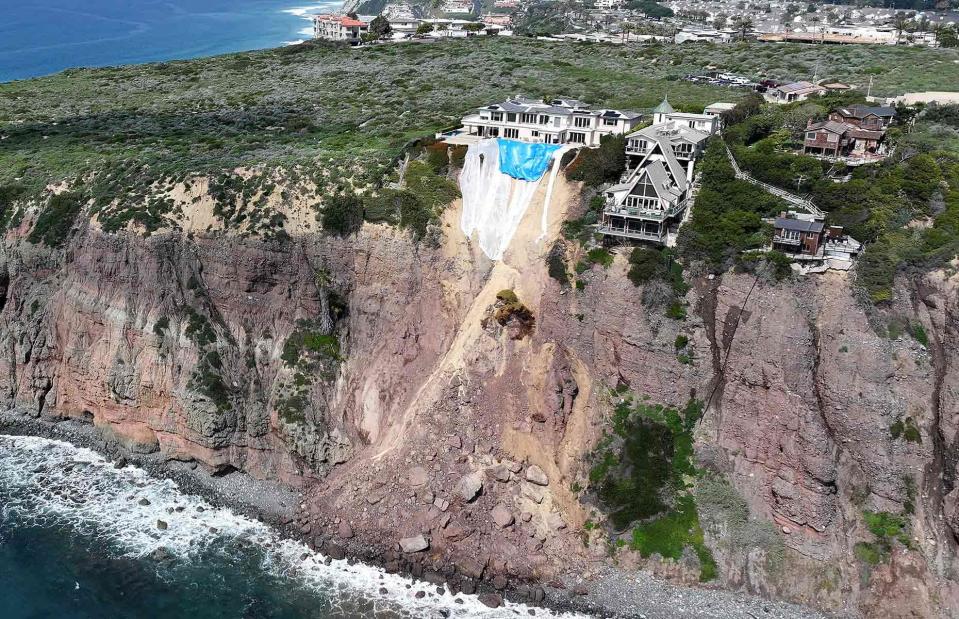
Mario Tama / Getty Images
Standing precariously on the frontlines of climate change, the world's most vulnerable shoreline communities face a perilous future. Plagued by ever-worsening coastal erosion, rising sea levels and catastrophic flooding, their futures hang dangerously in the balance.
As storms increase in ferocity and coastlines crumble, read on to take a look at 20 towns being gradually reclaimed by the ocean.
Brodten, Schleswig-Holstein, Germany

Henry Smits-Bode / Alamy Stock Photo
Perched on the southeast coast of Germany, the small, historic village of Brodten in the state of Schleswig-Holstein is a picturesque corner of the world. Its rural landscapes are peppered with farms and holiday homes – visitors are drawn to the picturesque locale for its waterfront views and quieter pace of life.
However, the ocean, the very reason Brodten is so popular with tourists, may also be the cause of its demise. Situated on the Baltic Sea, the waves are gradually breaking off pieces of the rock face, endangering the structures along this stretch of rapidly shrinking coastline.
Brodten, Schleswig-Holstein, Germany
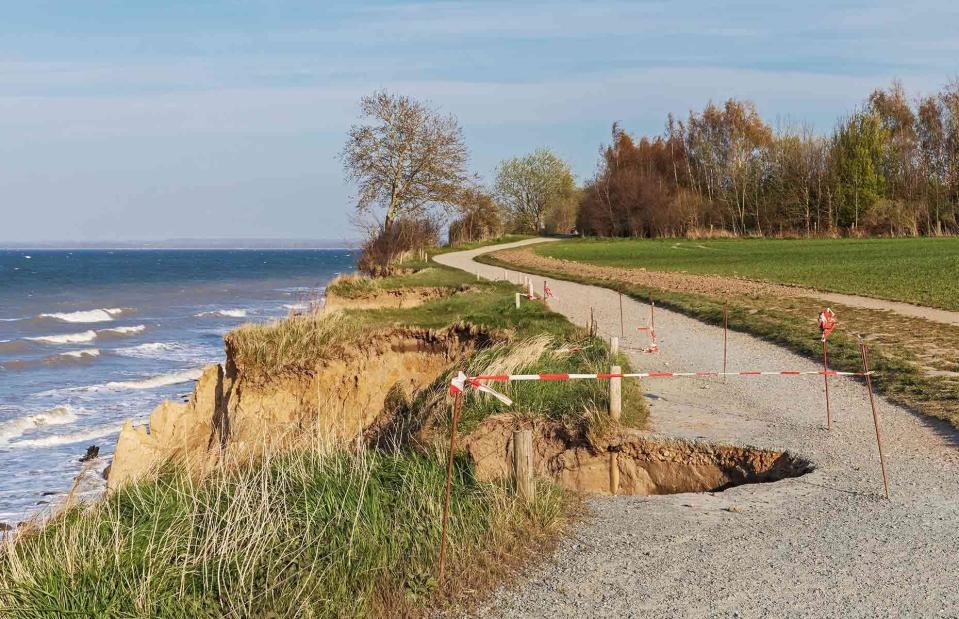
Thorsten Schier / Shutterstock
In January 2024, large chunks of the cliff at Brodten cascaded into the sea amid a sustained period of rain and frost. The collapse has threatened the habitat of the native sand martin, as well as the future of buildings poised close to the edge.
The cliffs that run along this region are known as the Brodtener Steilufer or the Brodtener Ufer. According to Germany's State Coastal Protection Agency, around 3.2 feet (1m) of coastline is lost every year, meaning hiking trails must be regularly diverted.
Brodten, Schleswig-Holstein, Germany
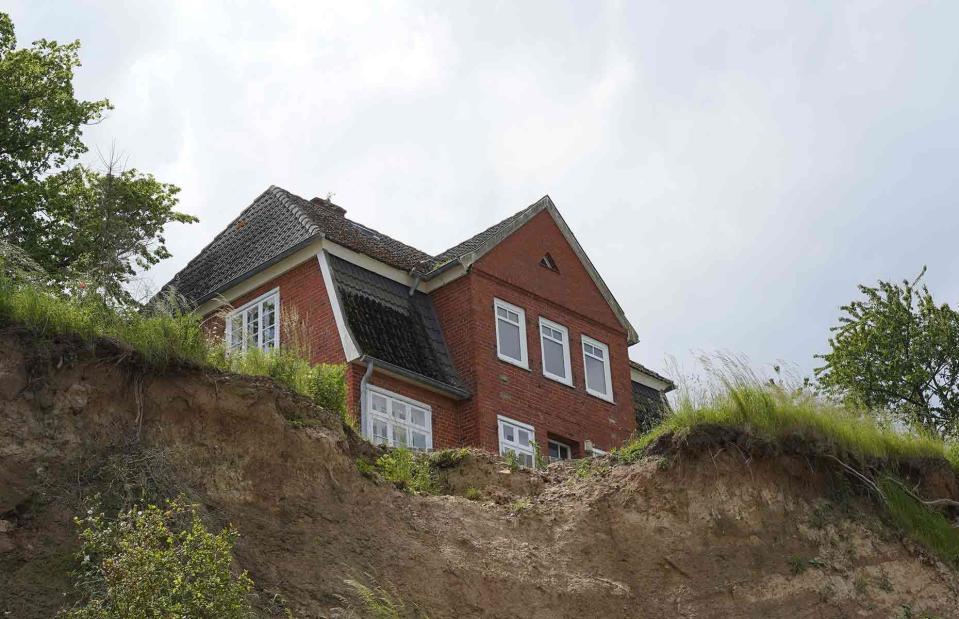
Achim Wagner / Shutterstock
Pictured here, local youth centre Haus Seeblick balances on the brink of the receding cliff. With only 13 feet (4m) between the closest corner of the structure and the cliff edge following the collapse in early 2024, the centre was closed and the path that runs outside it was fenced off. While there are hopes to continue running the youth centre, the future doesn't look promising.
According to German broadcaster NDR, the cliffs will continue to erode along the coastline. A ban has been put in place restricting any new construction to at least 492 feet (150m) behind areas vulnerable to collapse. This is truly a town experiencing the brute force of Mother Nature.
El Bosque, Tabasco, Mexico
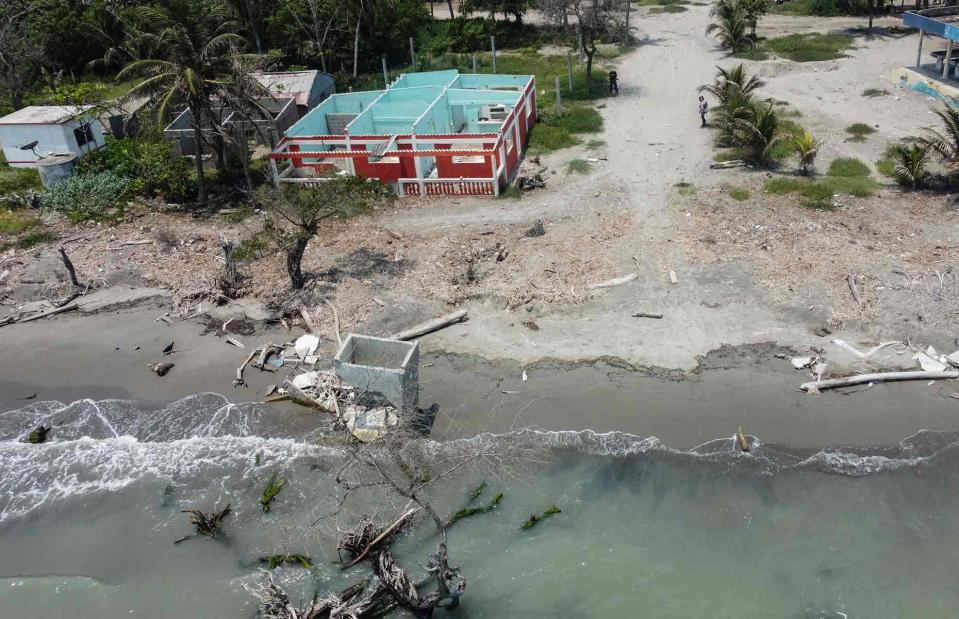
YURI CORTEZ / AFP via Getty Images
Back in the 1980s, El Bosque was a bustling fishing village on the coast of the Mexican state of Tabasco. Many residents in the community turned to the Gulf of Mexico to earn a living, trawling its waters for fish to sell.
But while the ocean may be bountiful, the power of the waves has decimated El Bosque and swept away scores of its homes and amenities. More than 700 people once called the small village home in 2021. As of the end of 2023, only a dozen remain.
El Bosque, Tabasco, Mexico

YURI CORTEZ / AFP via Getty Images
Researchers say that sea levels across the Gulf of Mexico are rising at a staggering rate – three times faster than the global average. Coupled with increasingly vicious winter storms known as 'nortes', swathes of El Bosque have been lost to the ocean in a shockingly short period of time.
Speaking to Euro News, coastal vulnerability researcher Lilia Gama revealed that over 1,640 feet (500m) of the village's shoreline has been eroded since 2005, and the situation is only worsening. In 2023 alone, 98 feet (30m) of coast was lost, according to Pablo Montaño of Mexican environmental group Conexiones Climáticas. It's thought that one storm could wash El Bosque off the map for good.
El Bosque, Tabasco, Mexico
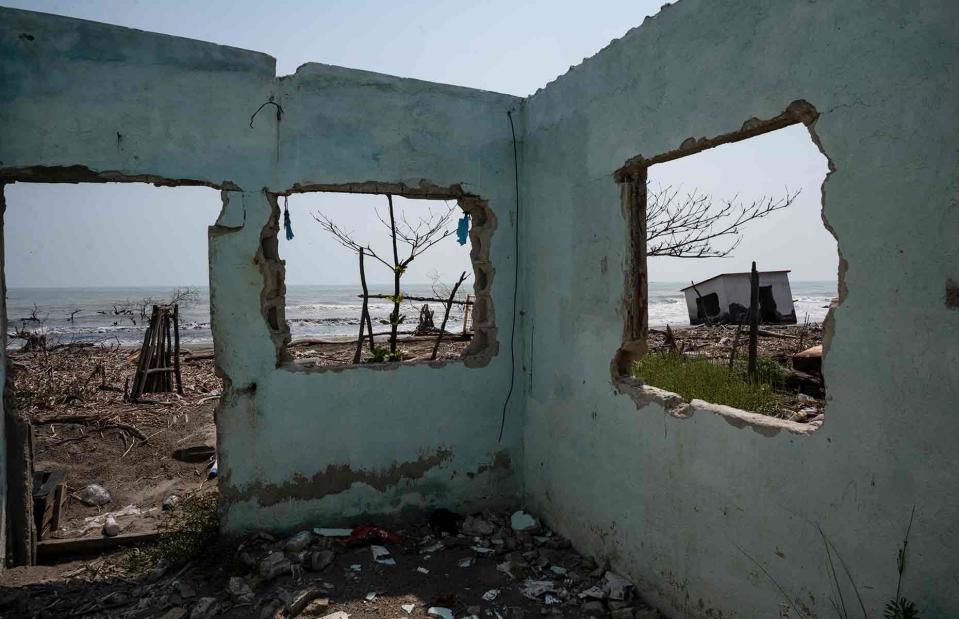
YURI CORTEZ / AFP via Getty Images
To date, the encroaching wrath of the Gulf of Mexico has destroyed El Bosque's main road, primary school and kindergarten, as well as over half of the village's homes. Concrete shells stripped by the waves stand marooned in the water, remnants of the community's not-so-distant past.
Sadly, El Bosque is not a tragic outlier. According to the global advocacy coalition the Mayors Migration Council, eight million more people across Mexico will be displaced by natural disasters fuelled by global warming by 2050.
Dana Point, California, USA
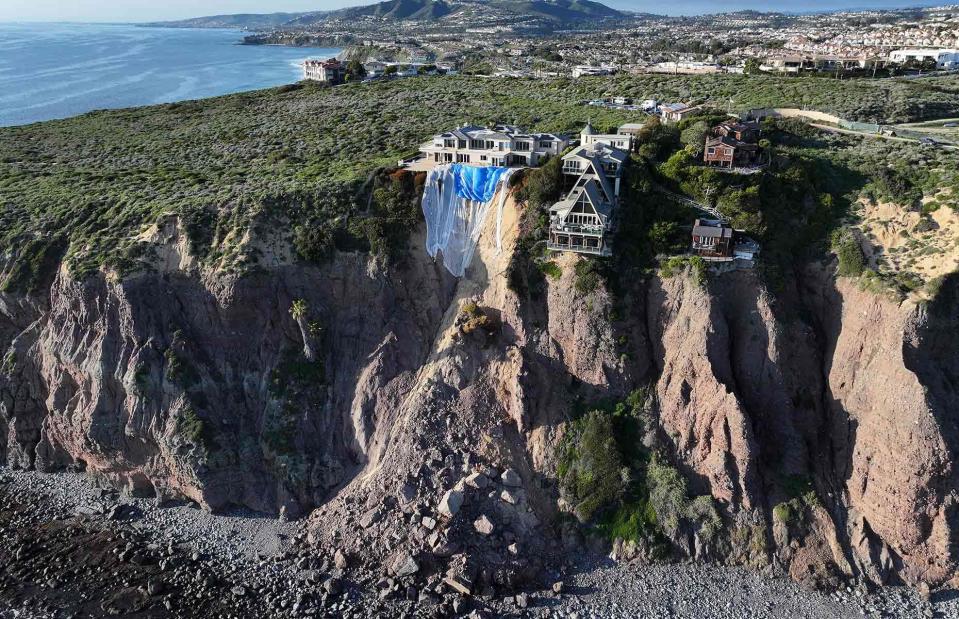
Mario Tama / Getty Images
Just south of Orange County's Laguna Beach, Dana Point is an archetypal Californian surfers' paradise, characterised by its white-sand beaches, breathtaking bluffs, marinas, boutique-style shops and luxurious homes. In fact, since 2021, the average house price in the coastal oasis has been well over a million dollars.
However, climate change is threatening this privileged enclave. In 2022, 100% of California was deemed abnormally dry, according to the US Drought Monitor. Fast-forward two years and only 1.2% of the state is now classified as such. A bizarre rainfall event is behind this dramatic change and it's starting to wreak havoc on this section of South California's shoreline...
Dana Point, California, USA

Mario Tama / Getty Images
The winter of 2023 saw a seismic weather shift for California when over a dozen atmospheric rivers made landfall. This phenomenon occurs when large corridors of the Earth's atmosphere carry evaporated water from tropical oceans and deposit it in the form of extreme rainfall. These unprecedented weather events continued in 2024, leading to an increase in landslides across the state.
Dana Point has been particularly affected. In February 2024, after 18 inches (45cm) of rain fell in the first two months of the year, three multimillion-dollar mansions were left balancing on a cliff edge (pictured). The barrage of storms had triggered a landslide and chunks of the cliff face had tumbled down into the waves below.
Dana Point, California, USA
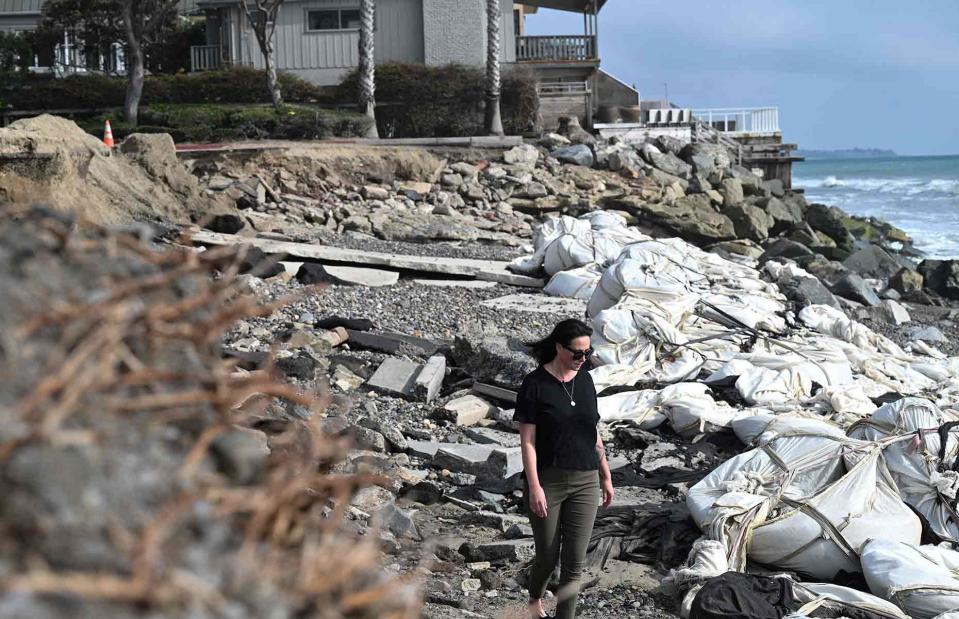
ROBYN BECK/ AFP / AFP via Getty Images
Coastal erosion is felt keenly in other areas of the city too. Pictured here in October 2022, sandbags line Capistrano Beach in an attempt to stop the advancing tide from swallowing up more of the shrinking shore.
According to predictions published in the Communications Earth & Environment scientific journal in 2024, shorelines across this stretch of Southern California are expected to shrink by just over 6.9 feet (2.1m) per year by 2025 and 10.5 feet (3.2m) per year by 2100. The current rate of retreat is just under 4.9 feet (1.5m) per year. Sadly, sea levels are continuing to rise and the ocean is gaining ground.
Togoru, Viti Levu, Fiji
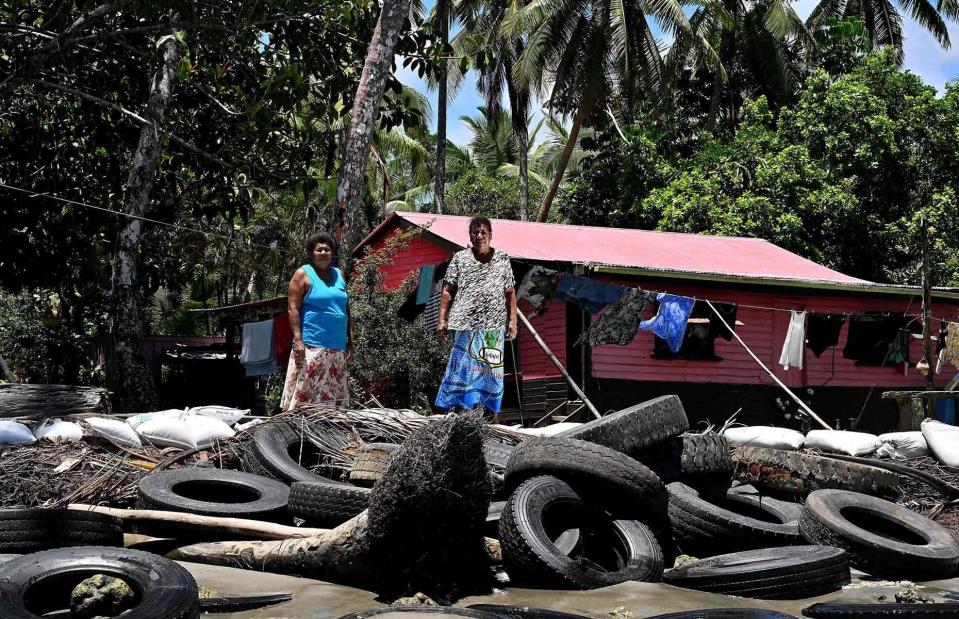
SAEED KHAN / AFP via Getty Images
Located on Viti Levu, Fiji's largest island, Toguru is one of 42 villages across the country deemed under urgent threat from rising sea levels. The Fijian government predicts that over 600 communities may need to be relocated in the future as more land vanishes.
Pictured here, Lavenia McGoon, a longtime resident of Togoru, stands with a family member outside her beachfront home. Between her property and the water lies a makeshift sea defense comprising old car tyres and debris – an attempt to slow the erosion that's slowly reclaiming more of the community's land. McGoon has accepted that her home's days are numbered. "Nobody can stop it... nobody can stop the water", she told Al Jazeera.
Togoru, Viti Levu, Fiji
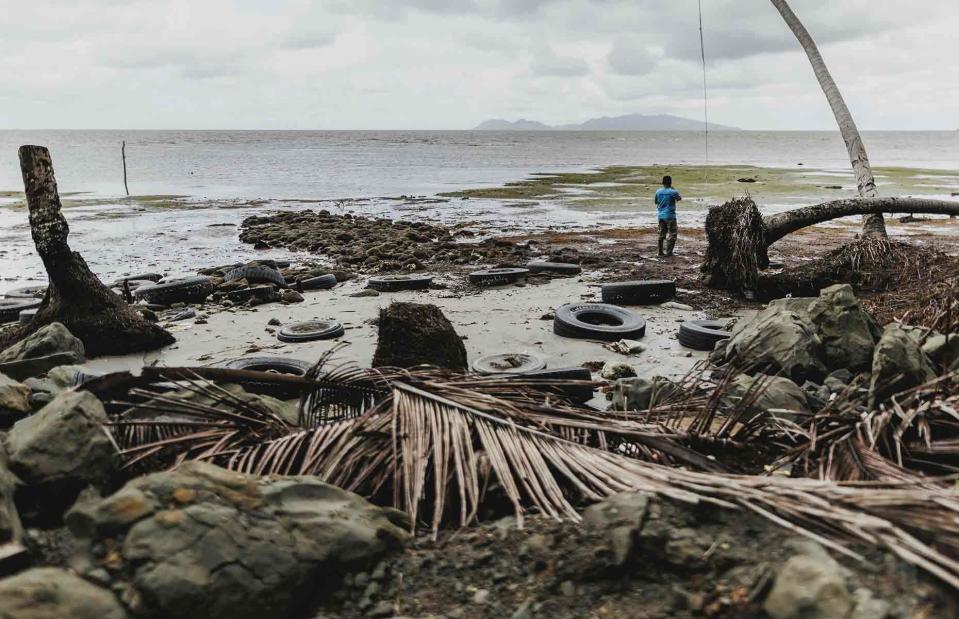
dpa picture alliance / Alamy Stock Photo
Togoru's flooded mangrove forest is emblematic of a crisis that's affecting huge swathes of Fiji, which is comprised of over 330 islands.
As well as rising sea levels, crippling cyclones are regular occurrences in the region, resulting in widespread devastation and accelerated coastal erosion. The second-strongest cyclone to hit Fiji, Tropical Cyclone Yasa made landfall in December 2020, resulting in the deaths of at least four people and the destruction of 8,000 homes. Meanwhile, 2016's Tropical Cyclone Winston was the deadliest cyclone in the country's modern history, killing 44 people and causing some £1.1 million ($1.4bn) in damage.
Togoru, Viti Levu, Fiji

dpa picture alliance / Alamy Stock Photo
In May 2024, McGoon showed government officials the remains of Togoru's flooded cemetery, now lost to the waves. The town's land mass is said to be shrinking by some 4.9 feet (1.5m) each year.
Yet Fiji isn't shirking its responsibilities to its people. In 2018, the Fijian government set up a task force dedicated to investigating how threatened communities can be relocated. Officials also set up a trust fund to support those displaced by climate change in 2019 – a world first. In 2024, the New Zealand government donated NZ$3.6million (£1.7m/$2.2m) to the fund.
Since 2011, the Fijian government has moved six communities affected by climate change to other locations and has developed a standardised plan for future relocations.
Hemsby, Norfolk, UK
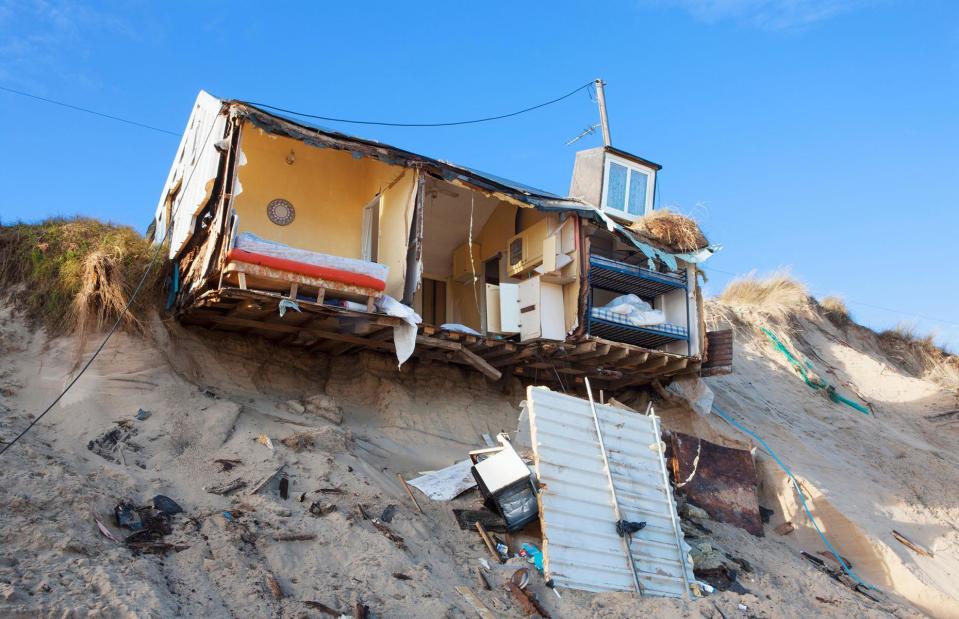
nobleIMAGES / Alamy Stock Photo
On the UK's Norfolk coast, the village of Hemsby is being eaten away by the sea, bit by bit. The village was first devastated by a December 2013 storm surge, which resulted in the destruction of seven homes. Now, the speed at which the cliff edge is receding has shocked locals and experts alike, with residents paying a hefty price for the lack of suitable sea defences.
When the so-called 'Beast from the East' storm struck in March 2018, the village was one of the worst affected spots on the Norfolk coast. During the tempest, a total of 13 clifftop homes in an area of the seafront called The Marrams were left uninhabitable.
Fast-forward five years and ferocious storms in March and December 2023 later led to eight homes being torn down.
Hemsby, Norfolk, UK
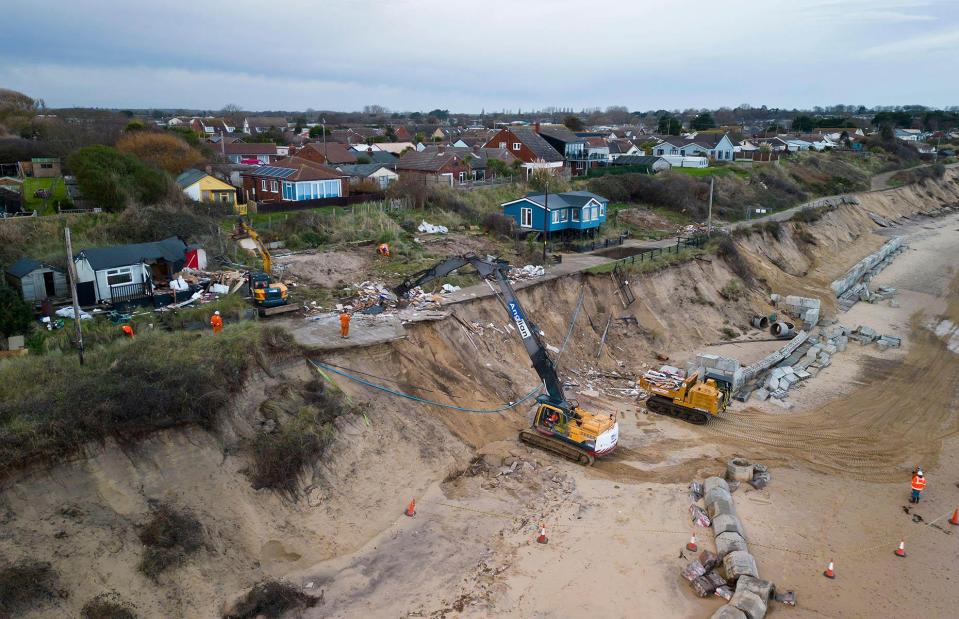
Adrian Buck / Alamy Stock Photo
Unfortunately for Hemsby and other villages like it along the Norfolk coast, help hasn't been forthcoming. In October 2023, Hemsby was found ineligible for government funding to build a 0.8-mile (1.3km) coastal defence scheme, which would cost around £20 million ($25.4m). This is despite tourism to the village contributing £80 million ($102m) to Norfolk's economy per year, according to the Save Hemsby Coastline (SHC) campaign group.
In January 2024, the SHC handed 10 Downing Street a petition calling for action that had been signed by 17,000 people.
Hemsby, Norfolk, UK
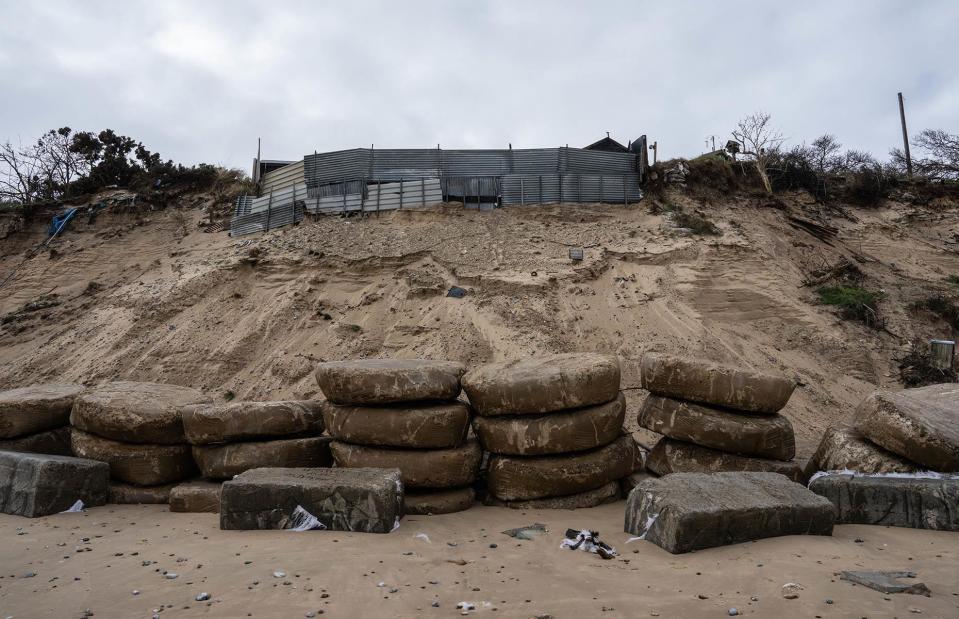
Carl Court / Getty Images
A month later in February 2024, it was revealed that Hemsby had been left out of a £25 million ($32m) government sea defense scheme, leaving residents to resort to rudimentary defences (pictured).
Most recently, a former Hemsby resident who lost his home has taken the government to court for allegedly failing to protect him against climate change. The case has been adjourned until late July.
While a new scheme that could offer locals inland plots where they could rebuild their lost homes is reportedly being proposed, it no doubt feels like too little too late for Hemsby's residents.
Bonifacio, Corsica, France
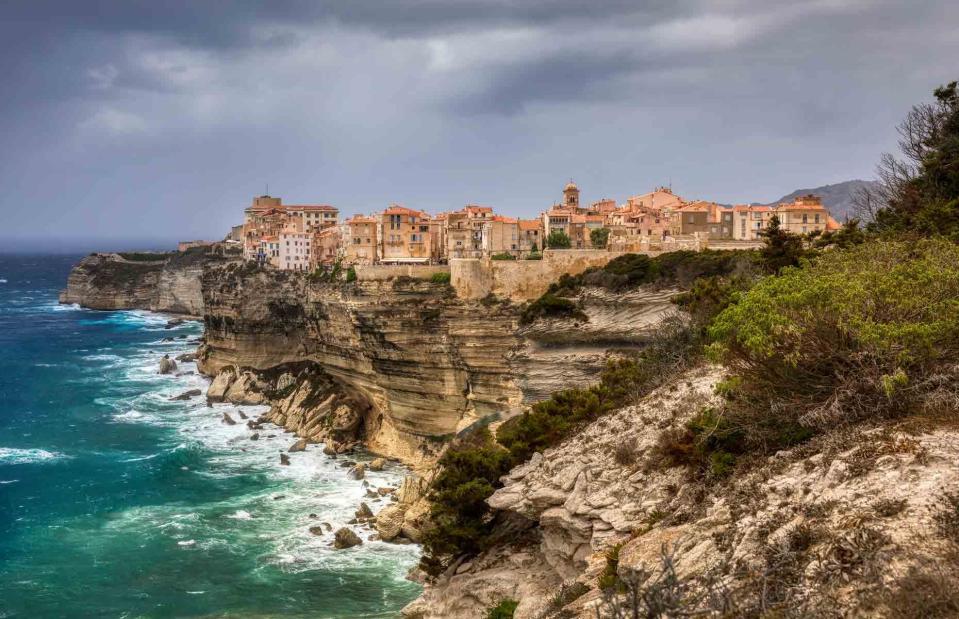
Rolf E. Staerk / Shutterstock
Perched on the edge of Corsica, an island off the south coast of France, the medieval town of Bonifacio has weathered whatever storms Mother Nature has thrown its way over the centuries.
However, thanks to strong sea currents, high wind speeds and frequent landslides, the future of this idyllic Mediterranean settlement is under threat.
Bonifacio, Corsica, France
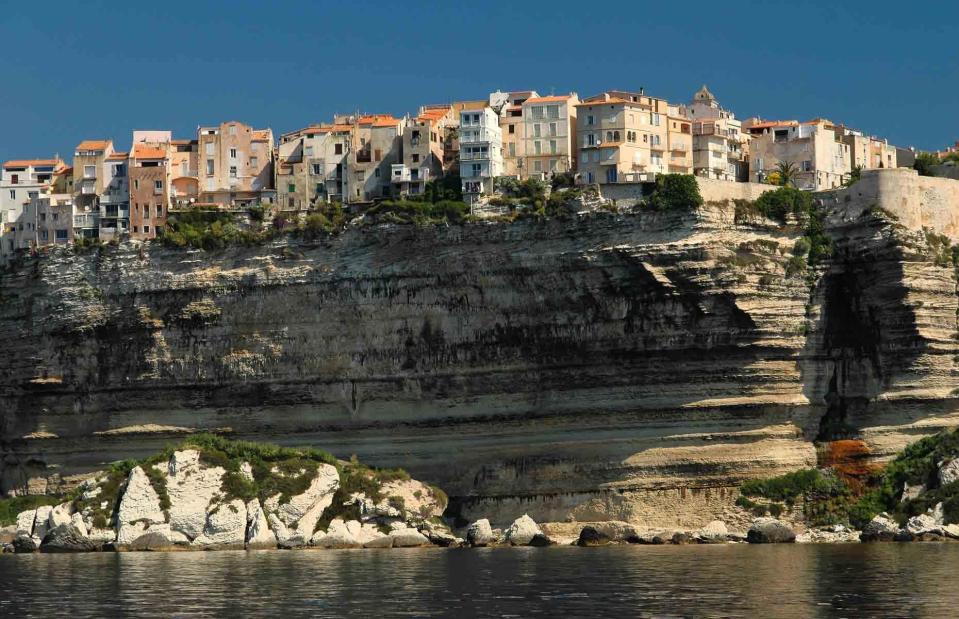
LUC BIANCO / Shutterstock
The foot of the sandstone cliff where Bonifacio is located has retreated due to severe erosion over hundreds of years, leaving a dramatic overhang, where some 30 homes balance on the edge.
A 2018 report on climate change and the marine environment in Corsica concluded that global warming was contributing to the area's erosion issues. It urged the town's authorities to address the perilous situation, sooner rather than later.
While no properties have tumbled to the waves, a state of emergency was declared in the town in 2019 when parts of the medieval fortress crumbled under the force of the wind.
Bonifacio, Corsica, France
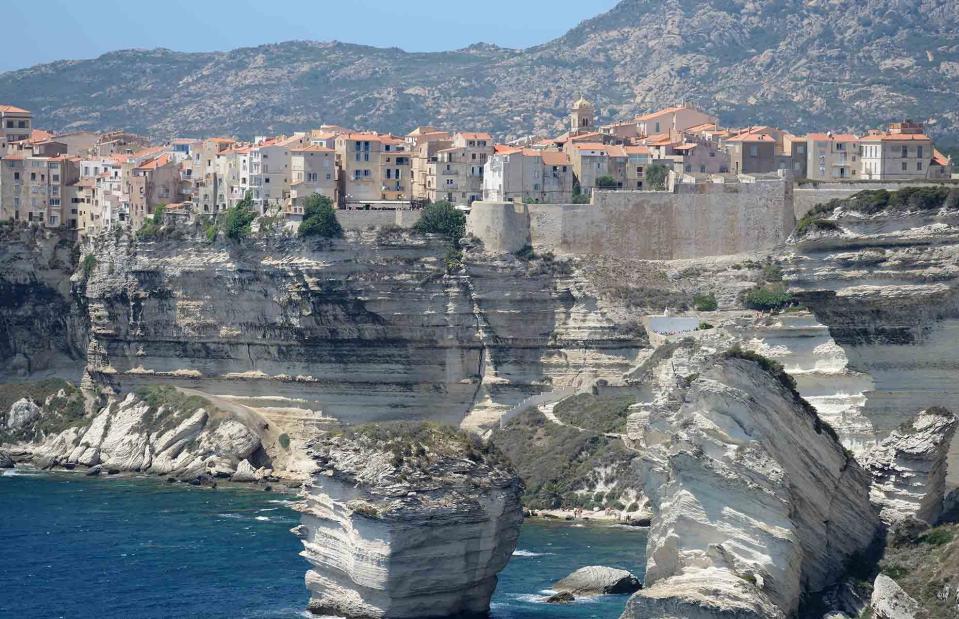
Frédéric Soltan / Getty
Three years of investigation led to the revelation in March 2023 that the cliffs, which reach almost 350 feet (106m) high in places, have two faults 262 feet (80m) up. So far, two homes have been evacuated and 25 more have been classified as fragile.
In November 2023, the French Geological Survey found 35% of Corsica's rocky coast to be highly sensitive to coastal erosion, mainly around Bonifacio, Cap-Corse and Calvi.
Happisburgh, Norfolk, UK
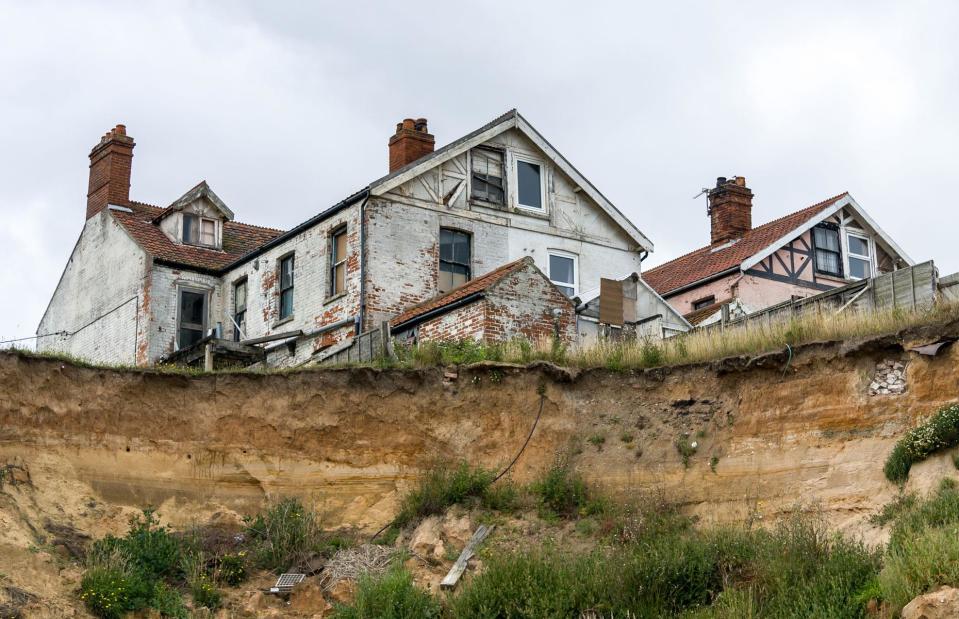
Philip Bird LRPS CPAGB / Shutterstock
A warmer world means fiercer and more frequent storms and ever more damaging sea swells and storm surges, which doesn't bode well for places like Happisburgh on England's east coast, one of the fastest eroding shorelines in Europe.
Battling for survival against the sea, Happisburgh's soft clay and sand cliffs have been crumbling for the past 5,000 years, and over the last two decades, 34 homes have been lost to the waves.
Happisburgh, Norfolk, UK
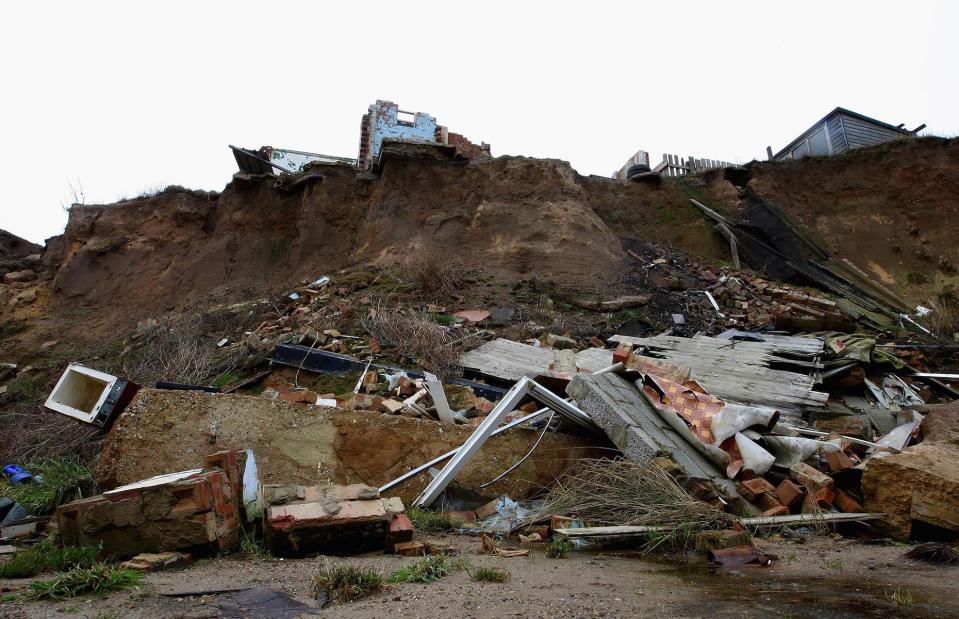
Jamie McDonald / Getty Images
Sea defences built in the 1950s have failed to protect the shoreline against the increasing impact of global warming. A catastrophic storm surge in 2013 left homes teetering on the edge of the Happisburgh's cliffs – and they were the lucky ones. Other dwellings fell dramatically into the sea.
Over the next 20 years, Happisburgh is predicted to relinquish more land to the sea than any other location in the UK. Experts estimate that the village will lose the equivalent of two football pitches over the next two decades.
With Happisburgh's timber defences nearing the end of their life, the village's future looks very bleak indeed.
Happisburgh, Norfolk, UK
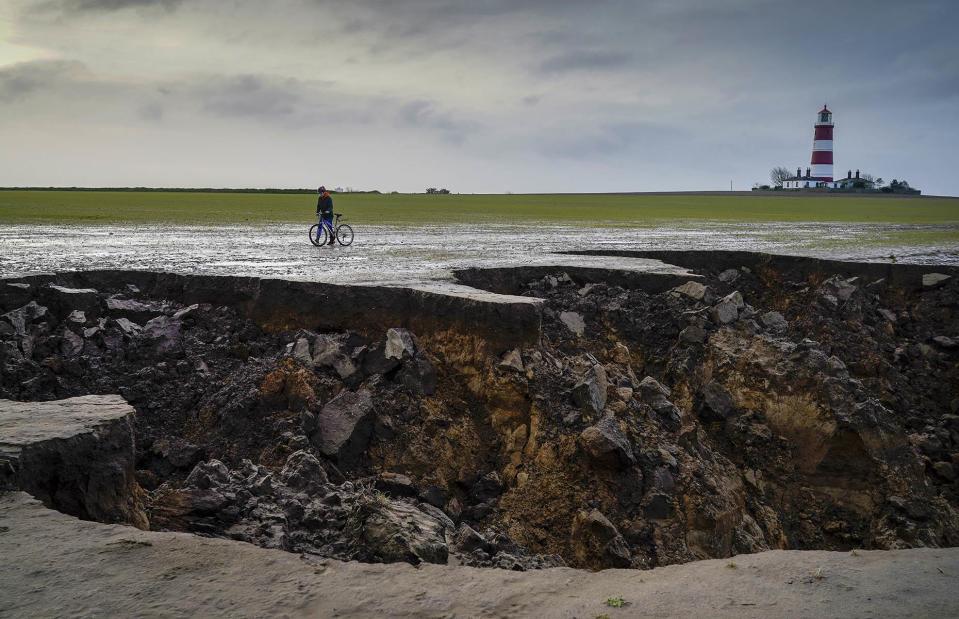
Christopher Furlong / Getty Images
Landslips continue to threaten the historic village, which is home to an 18th-century lighthouse (pictured), a 15th-century church and the oldest set of fossilised human footprints outside of Africa, dating back at least 850,000 years.
Unfortunately, Happisburgh has been denied government funding to improve its sea defences, with the local council stating that it was "not realistically feasible". But the coastline continues to shrink, with local paper the North Norfolk News reporting that around 33 feet (10m) of land was lost in the winter of 2023 alone.
Pacifica, California, USA
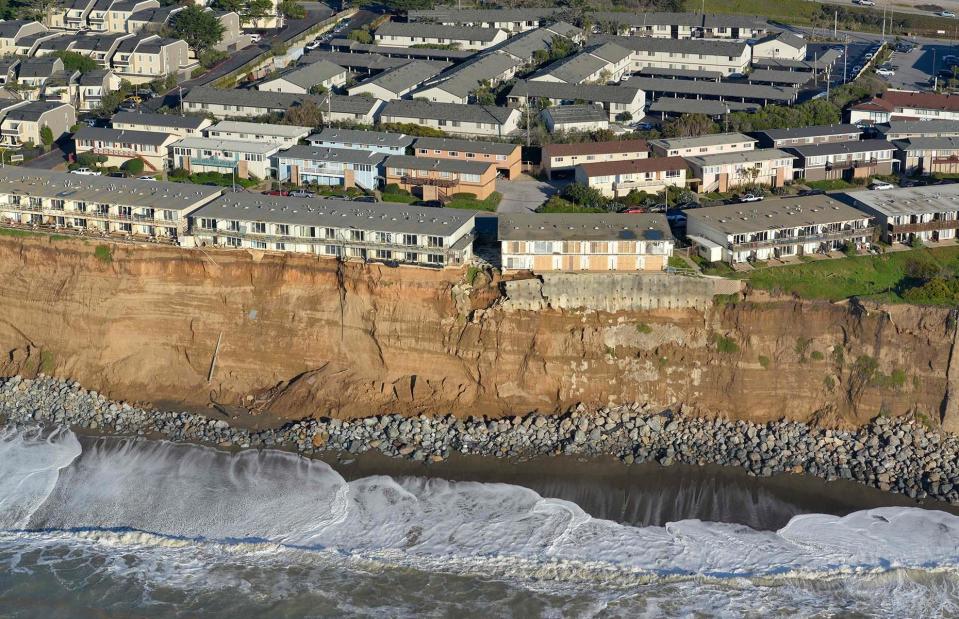
JOSH EDELSON / AFP via Getty Images
The Californian shoreline is one of the world's worst coastal erosion hotspots. Almost three-quarters of the state's coastline is eroding and while this stretch of shore has been wearing away since the last Ice Age, the process is set to intensify in the coming years. The city of Pacifica near San Francisco is especially susceptible.
Pacifica, California, USA
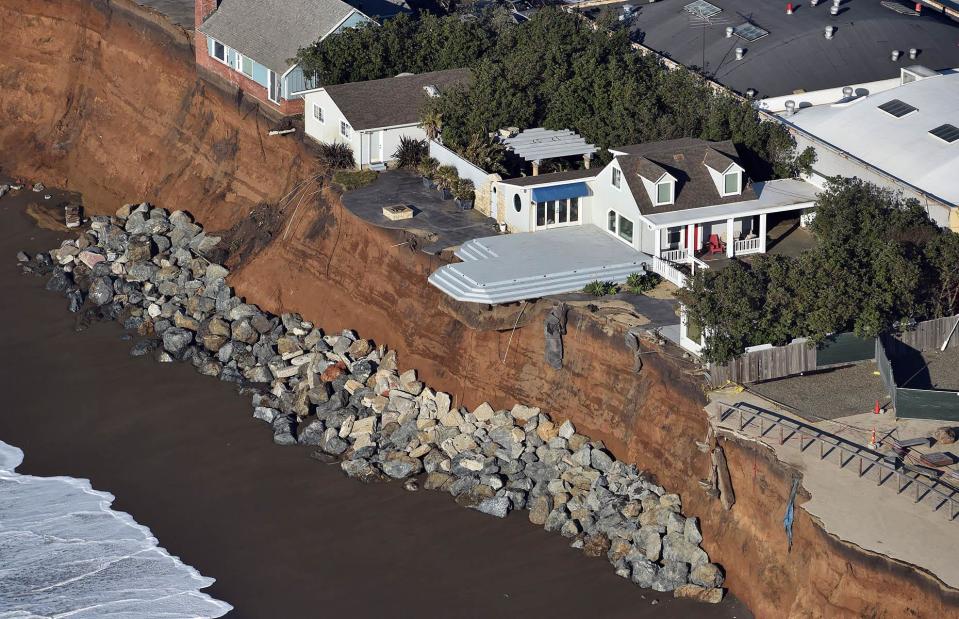
JOSH EDELSON/AFP via Getty Images
A barrage of intense storms in the winter of 2015/16 played havoc with the community. Destructive waves and surf battered the coastline, hastening the erosion of Pacifica's cliffs and leaving a number of houses and apartment buildings perched perilously close to the cliff edge. Residents had to be evacuated, with some properties deemed uninhabitable.
Pacifica, California, USA
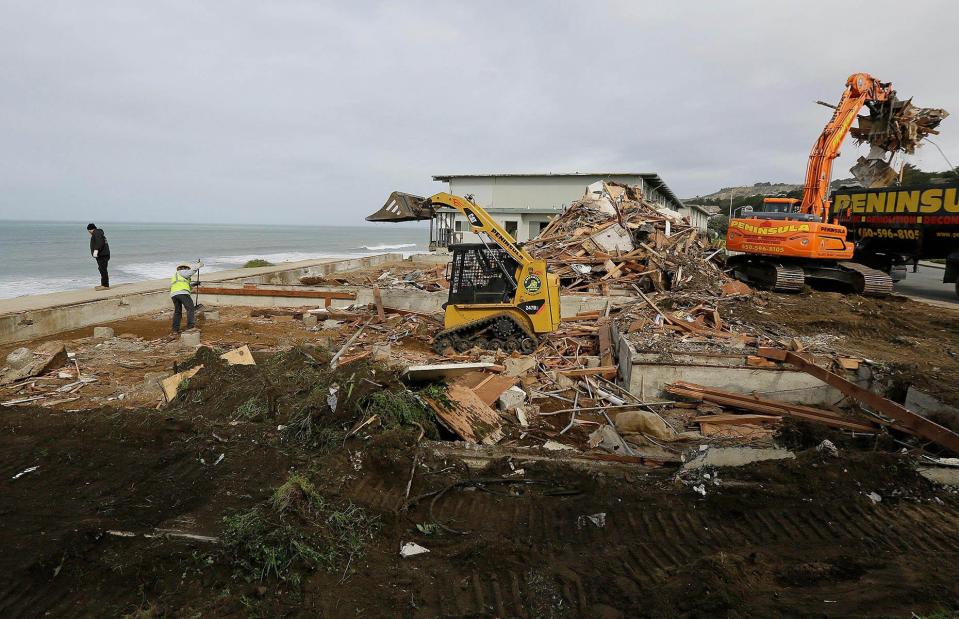
Associated Press / Alamy Stock Photo
The condemned buildings have since been demolished, including this cliffside apartment building, which was torn down in 2016. The two-storey building had been vacant since its 12 units were red-tagged following a storm in 2010.
Many other structures in the city are still at risk. In 2018, an enormous fine of nearly £1.2 million ($1.5m) was issued to the owners of a clifftop apartment complex for failing to carry out adequate repairs to the bluff where the block sits.
The situation only appears to be worsening. A 2023 study found that up to 75% of California's beaches could be swallowed by the waves by the end of this century.
Soulac-sur-Mer, Gironde, France
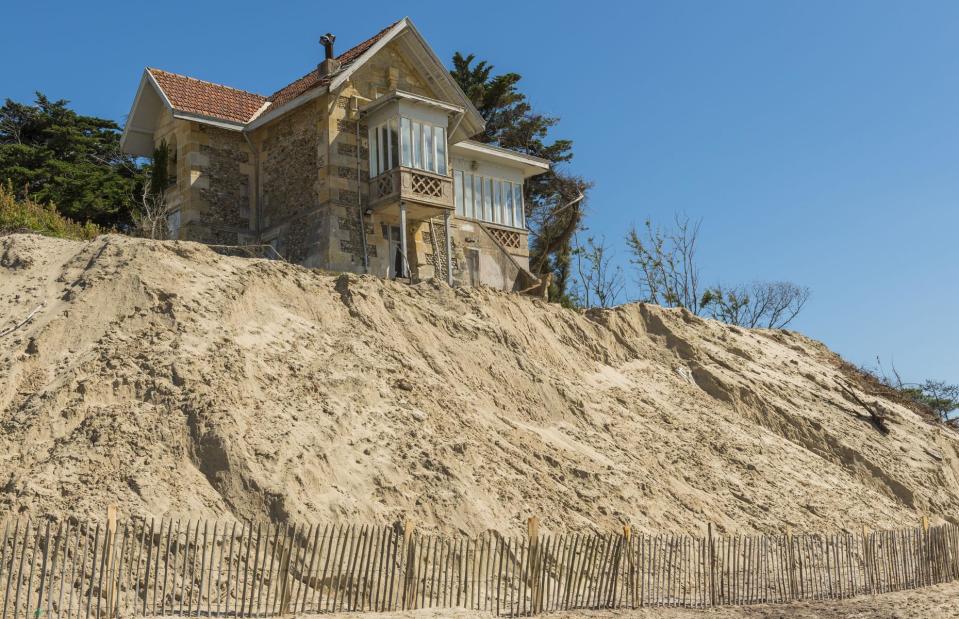
Daan Kloeg / Shutterstock
The picturesque resort town of Soulac-sur-Mer is located on the swiftly eroding Aquitaine coast in southwest France. From year to year, the shoreline here is retreating fast and as climate change intensifies the situation is poised to get much worse.
Soulac-sur-Mer, Gironde, France

SpiritProd33 / Shutterstock
Le Signal apartment building has become the poster child for climate change-induced coastal erosion in France. Built in the 1960s, the Brutalist housing block was constructed on an artificial dune and was originally located over 600 feet (182m) from the ocean.
Soulac-sur-Mer, Gironde, France
![<p>jacme31 / Flickr [CC BY-SA 2.0]</p>](https://s.yimg.com/ny/api/res/1.2/GLRHpgRe8NCdrT6cBTxszQ--/YXBwaWQ9aGlnaGxhbmRlcjt3PTk2MDtoPTYxOQ--/https://media.zenfs.com/en/loveexploring_uk_835/89ab5615b63761d28c280e0631019dab)
jacme31 / Flickr [CC BY-SA 2.0]
The building was evacuated in 2014 and subsequently condemned, following a succession of eight winter storms that caused rapid erosion to the coastline.
In February of 2023, Le Signal was finally demolished, having lost the fight with Mother Nature. At the time of its ultimate destruction, the massive complex stood just 40 feet (12m) from the encroaching Atlantic.
Shishmaref, Alaska, USA
![<p>Bering Land Bridge National Preserve / Flickr [CC BY 2.0]</p>](https://s.yimg.com/ny/api/res/1.2/kAbOcnW1kyWrIOjobYNhgg--/YXBwaWQ9aGlnaGxhbmRlcjt3PTk2MDtoPTYxOQ--/https://media.zenfs.com/en/loveexploring_uk_835/f6a6d8270ae037d3077b45dca7e36e42)
Bering Land Bridge National Preserve / Flickr [CC BY 2.0]
Alaska is warming faster than any other US state and twice as fast as the global average – rising to three times as fast in some seasons. As a result, many of its coastal communities face being wiped out as a nightmarish combination of melting permafrost, worsening storms and rising sea levels take their toll.
The town of Shishmaref lies just a few miles from the Arctic Circle and is one of the most threatened spots in the state.
Shishmaref, Alaska, USA

Associated Press / Alamy Stock Photo
In this coastal enclave, up to 10 feet (3m) of shoreline is being swallowed up by the sea each year, according to research by the US Army Corps of Engineers and Alabama-based Auburn University.
Rising sea levels, flooding and erosion – all at least partially caused by climate change – have contributed to an alarming loss of ice and land.
In 2002, Shishmaref's residents voted to move the entire town. A new location was eventually selected, but the move was delayed on account of the cost, which was estimated to run into hundreds of millions of dollars.
Shishmaref, Alaska, USA
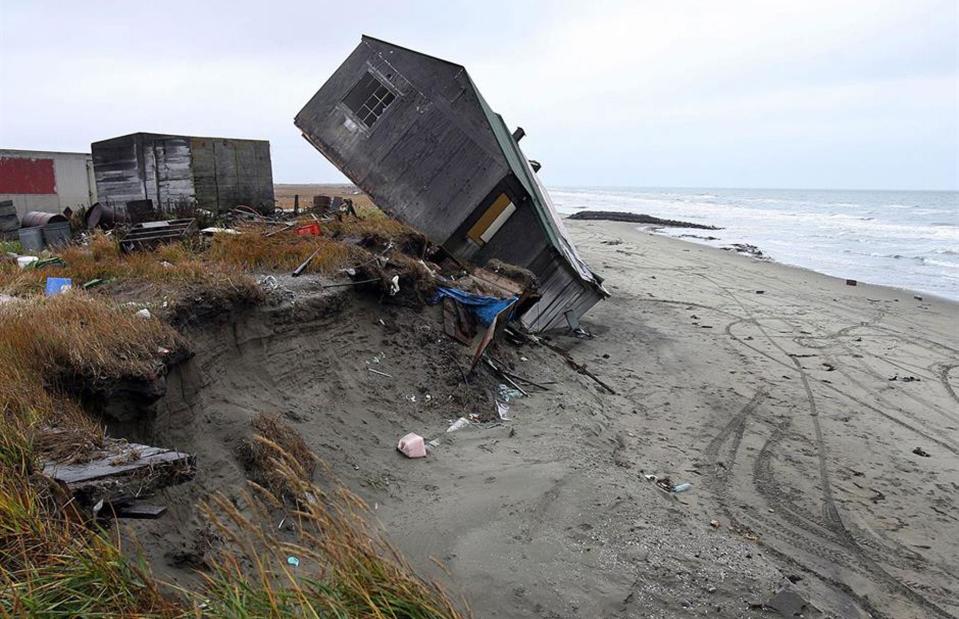
Gabriel Bouys / AFP / Getty Images
In 2016, a second vote took place, with locals once again reaffirming their wish to relocate the community.
Residents built a sea wall to protect the town while they awaited relocation. However, the move never happened – partly due to cost and partly because Shishmaref's native Inupiat community doesn't want to lose its hunting grounds, traditions and identity.
Sadly, sooner or later the land on which Shishmaref stands will be below water, a victim of the warming that is already devastating the Arctic.
Collaroy, New South Wales, Australia

katacarix / Shutterstock
A magnet for surfers, Collaroy Beach in the northern Sydney suburb of the same name is one of Australia's most at-risk coastal areas.
Though wild storms have destroyed homes in Collaroy since the suburb was established, climate change is increasing their frequency and intensity, exacerbating coastal erosion.
Collaroy, New South Wales, Australia
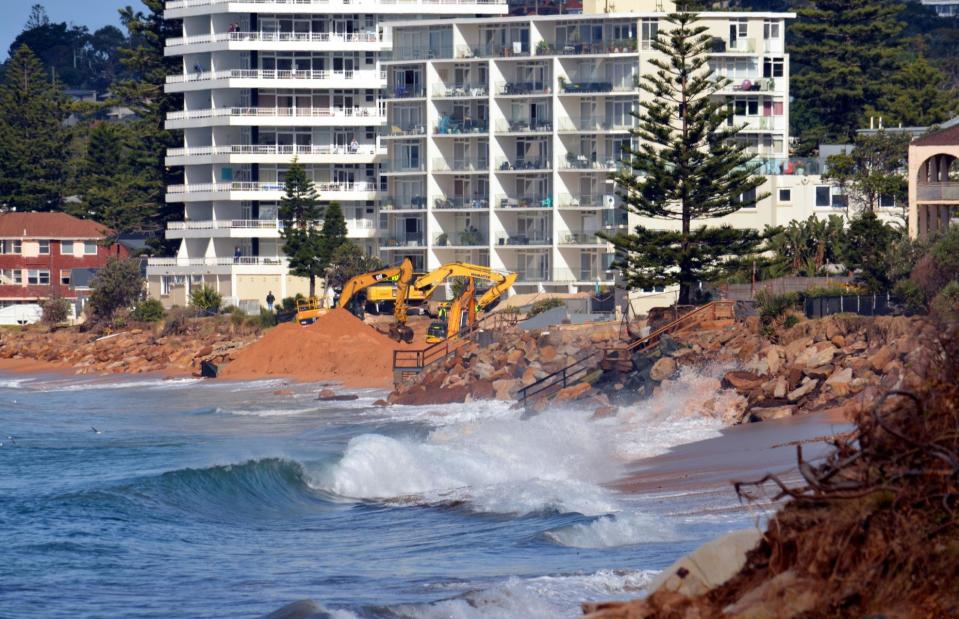
katacarix / Shutterstock
A massive storm hit the coastline in June 2016. Towering waves whipped up by strong winds pounded the shore, smashing up beachfront homes and pulling a swimming pool into the ocean. The tempest coincided with a severely high 'king tide' that magnified its effects. All in all, 164 feet (50m) of coastline vanished.
Collaroy was subjected to several more major storms in 2020. Again, they coincided with abnormally high tides and created huge waves, washing away more of the beach. Luckily the majority of homes along the shoreline escaped serious damage.
Collaroy, New South Wales, Australia
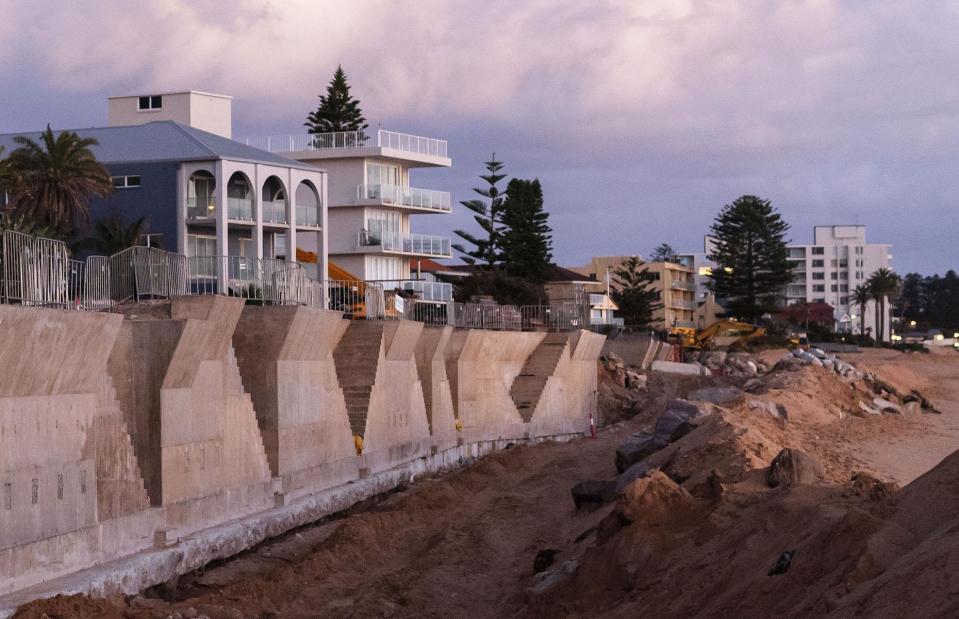
Brook Mitchell / Getty Images
In 2021, building began on a sea wall, pictured. It stands 23 feet (7m) high and runs for almost a mile (1.6km) along the shoreline.
However, not all Collaroy residents welcomed the wall and many campaigned for different measures. Concerned locals worried the wall would cause lasting damage to the beach and questioned why public space was being "destroyed" to save private property.
In January 2022, Collaroy was hit with a combination of large swells and high tides and residents were dismayed to witness large areas of the beach along the sea wall being washed away.
Sunset Beach, Hawaii, USA
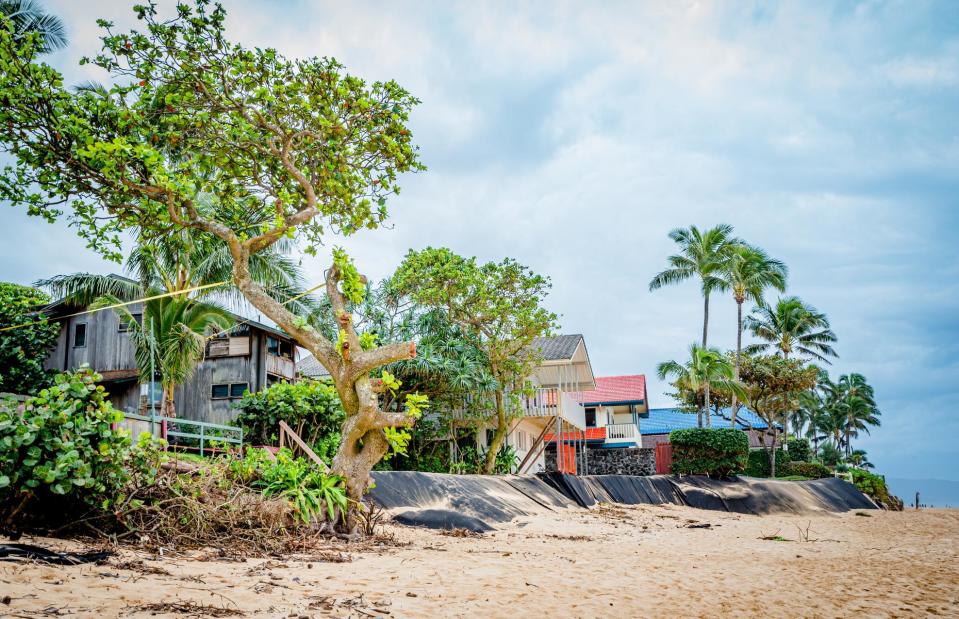
Nancy Anderson / Shutterstock
Coastal erosion in Hawaii is a perennial problem, but rising sea levels are making matters a whole lot more serious.
The water around Honolulu has risen 10 inches (25cm) since 1950 and 66,000 people across Hawaii are deemed regularly at risk from coastal flooding. A shocking 70% of the state's beaches are currently threatened by the encroaching sea, with the issue particularly acute in Sunset Beach on Oahu's North Shore.
Sunset Beach, Hawaii, USA
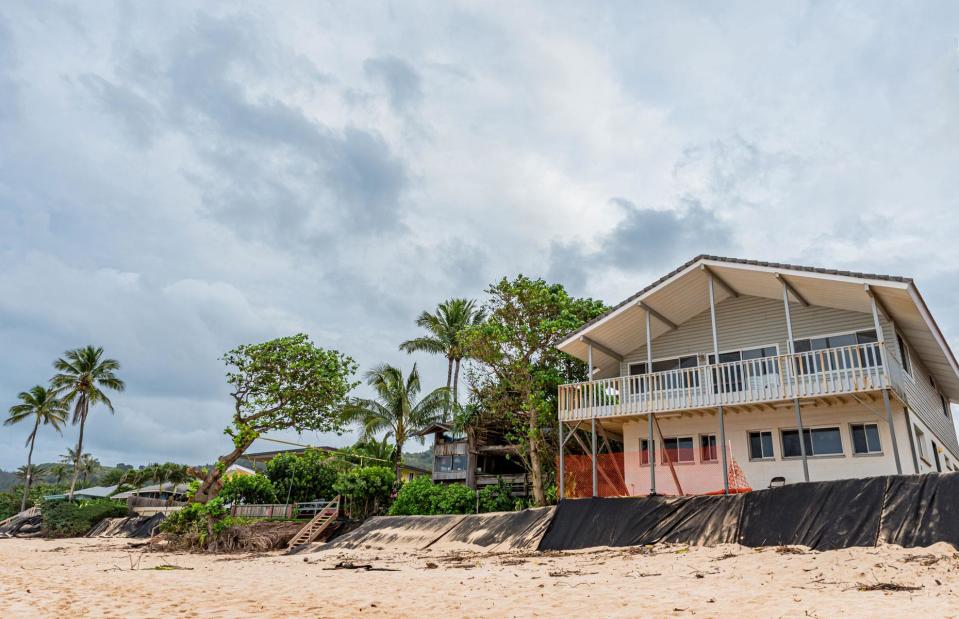
Nancy Anderson / Shutterstock
The erosion affecting Sunset Beach has been unprecedented in recent years. A run of exceptionally large surge episodes in 2017 saw waves of up to 40 feet (12m) and caused extreme erosion, threatening homes along the coastline.
Authorities have responded by allowing homeowners to install tarps filled with sand in front of their homes, but these so-called 'sand burritos' are merely temporary and a long-term solution to deal with the eroding coastline is proving elusive.
Sunset Beach, Hawaii, USA
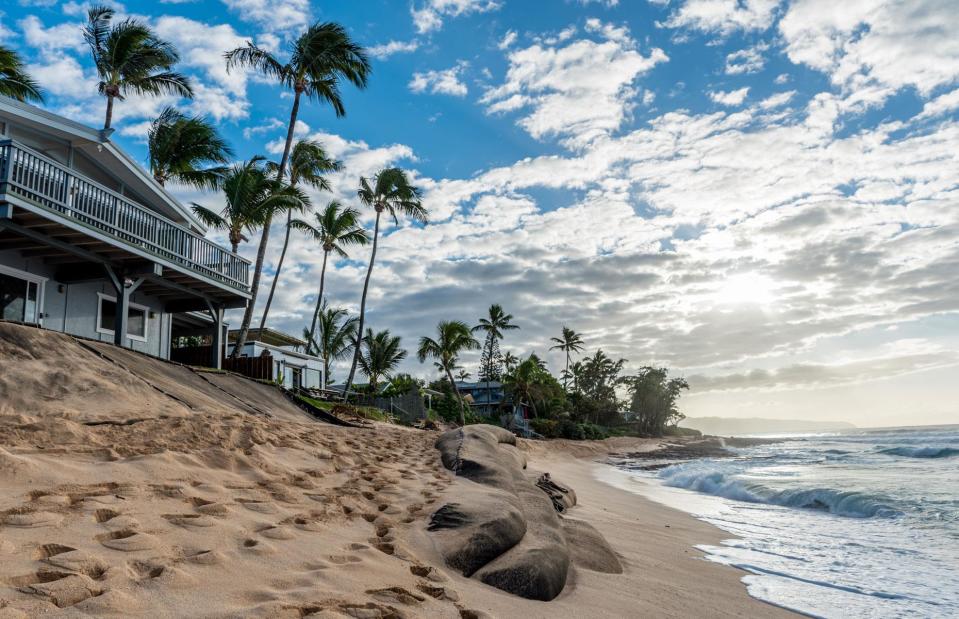
Nancy Anderson / Shutterstock
Hawaiian law prohibits the practice of 'shoreline armouring'. According to ProPublica, scientists claim that sea walls and other coastal defences such as sandbags are the leading cause of beach loss throughout the state. When waves hit the barriers, they pull sand from the shore and deposit it back into the ocean.
Despite this, a 2020 investigation revealed that almost 50 homeowners in Oahu alone had been granted permission to build new walls, keep illegally constructed walls and rebuild damaged ones over the preceding 20 years.
However, in a seeming crackdown on the practice, two homeowners at Sunset Beach were fined almost £789,000 ($1m) each in January 2024 for violations including the installation of sandbags and seawalls, and their failure to remove the structures.
Isla Vista, California, USA
![<p>Glenn Beltz / Flickr [CC BY 2.0]</p>](https://s.yimg.com/ny/api/res/1.2/TALhBHcQrvL5_.u81BzYRA--/YXBwaWQ9aGlnaGxhbmRlcjt3PTk2MDtoPTYxOQ--/https://media.zenfs.com/en/loveexploring_uk_835/0ff157a7a4f799b48e9aa59dc440dcd2)
Glenn Beltz / Flickr [CC BY 2.0]
Back on the fast-disappearing coastline of Southern California, the bluffs of Isla Vista are wearing away at a rate of 20 inches (50cm) per year, which doesn't sound like a lot, but when your home is hanging over the edge of a cliff, every inch counts. In fact, the rate of damage puts the bluffs among the fastest-eroding coastal features in the state.
Homes have had to be torn down in recent years due to cliff collapses, the worst of which occurred in 2017.
Isla Vista, California, USA
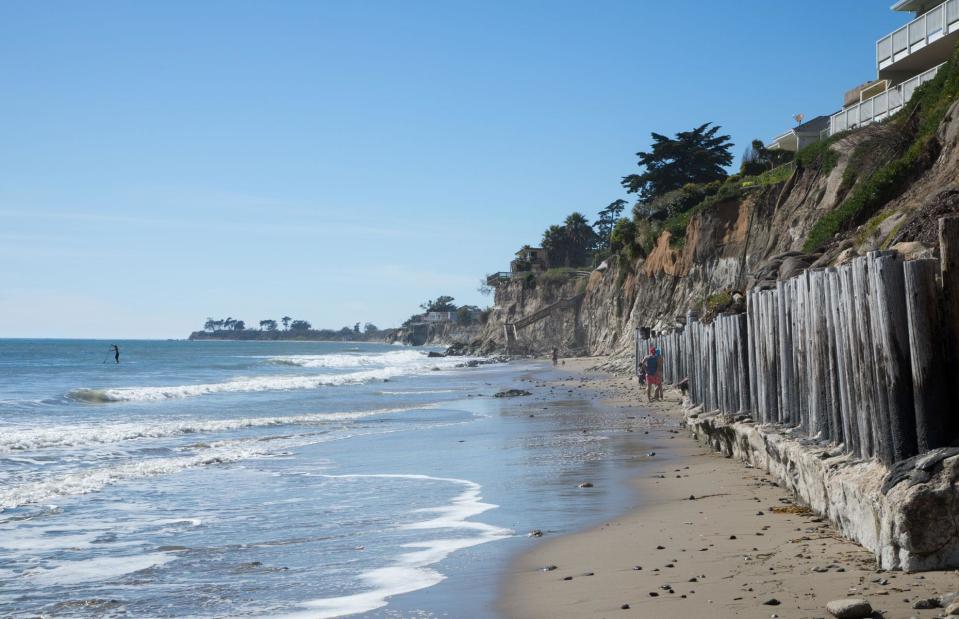
VDB Photo / Shutterstock
To deal with the threat and safeguard residents, Santa Barbara County has tightened regulations on the 84 properties perched on the edge of the bluffs.
Cliffhanging properties that impinge on a 10-foot (3m) buffer zone face the threat of demolition unless they can be supported by reinforcements. Formerly the buffer was just five feet (1.5m). While the new rule may protect residents for the time being, no long-term solution has yet been offered up.
Isla Vista, California, USA
![<p>Britta Gustafson / Flickr [CC BY-SA 2.0]</p>](https://s.yimg.com/ny/api/res/1.2/iT7ePCxIjiBGFBHHSsMDyg--/YXBwaWQ9aGlnaGxhbmRlcjt3PTk2MDtoPTYxOQ--/https://media.zenfs.com/en/loveexploring_uk_835/f25f57b7b0d17f04d99847f62456d696)
Britta Gustafson / Flickr [CC BY-SA 2.0]
As recently as February 2024, record-breaking rainstorms caused earth to give way beneath the balcony of a student apartment. As the erosion continues, balconies – and even houses – will be forced to become smaller.
Since 1994, 13 people have fallen to their deaths from the cliffs, most recently in September 2023. As Santa Barbara County's Fire Chief put it, the Isla Vista coastline is "just as dangerous as it is beautiful".
Skipsea, East Yorkshire, UK
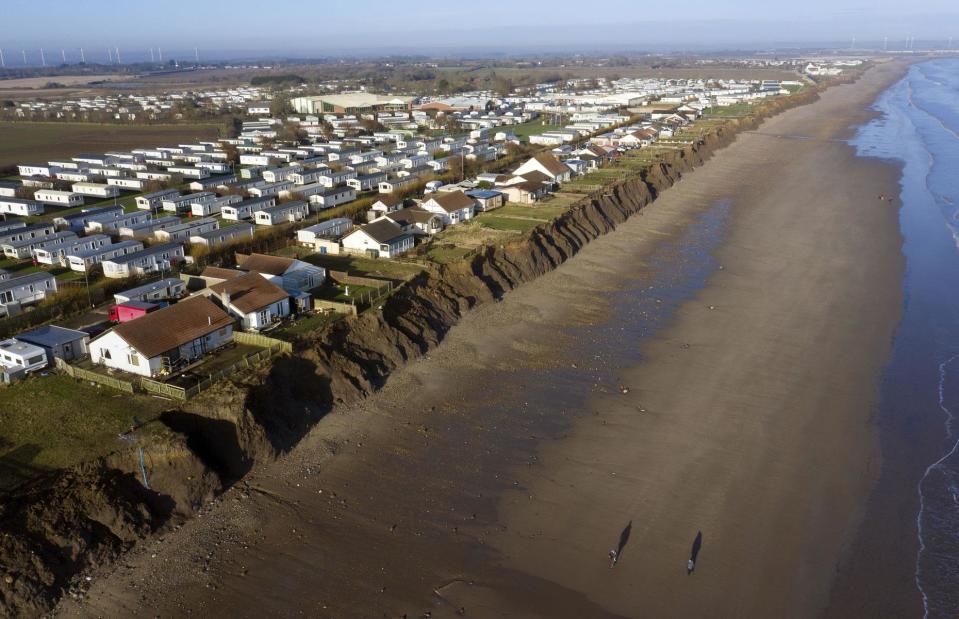
PA Images / Alamy Stock Photo
Another village on England's east coast that is enduring alarming erosion, Skipsea in East Yorkshire could be erased from the map in the not-so-distant future. The sea is eating away at East Yorkshire's soft clay soils at a rate of almost 20 feet (6m) per year, with some areas losing as much as 49 feet (15m) in one year. In fact, it's the fastest eroding coastline in the whole of Europe.
Dr Eddie Dempsey, a geology professor at the University of Hull, told the Mirror that the erosion is nothing new, but it is getting "faster and faster" and is "a direct consequence of climate change".
Skipsea, East Yorkshire, UK
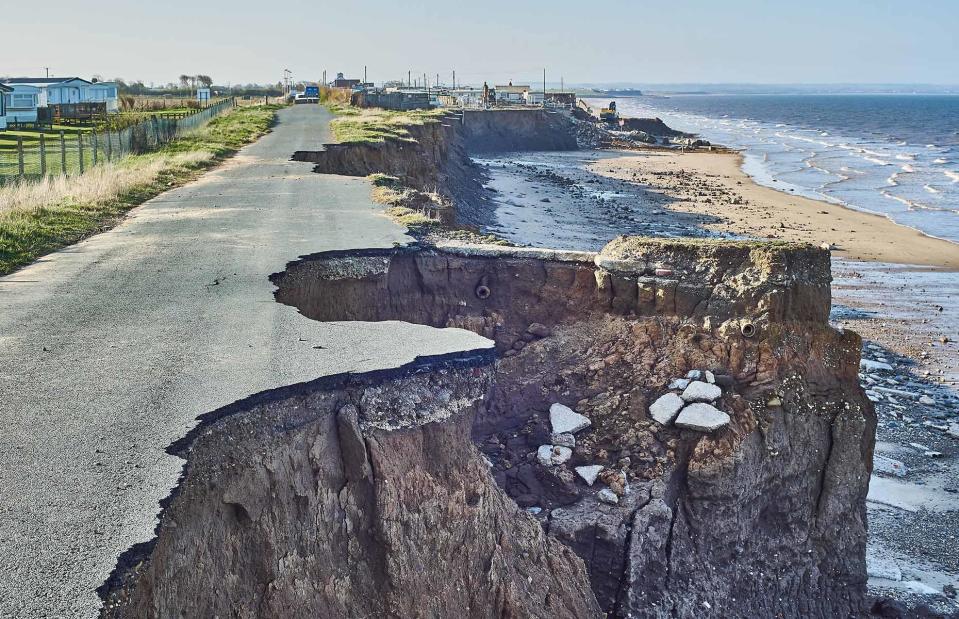
Matthew J Thomas / Shutterstock
During the past two decades, approximately half a mile (0.8km) of land has gone, according to local residents. Entire streets have disappeared along with the homes that once stood on them, and many more houses are at risk.
2023 was a bad year for Skipsea, with very high tides and strong winds contributing to several significant cliff collapses.
In early 2024, further storms ground away 30 feet (76m) of coastline in the space of just two weeks.
Skipsea, East Yorkshire, UK
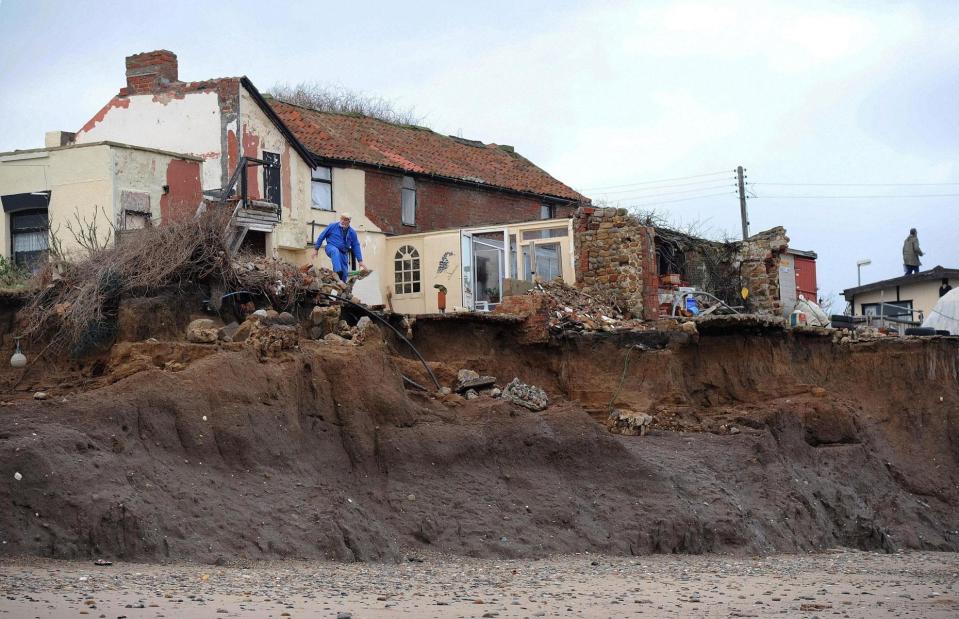
John Giles / PA Archive / PA
One local caravan park owner believes he has lost 10 acres (25m) of land over the past 60 years, according to the Mirror.
Unfortunately, implementing a coastal defence system has been deemed too costly and could also have a negative impact on local marine ecosystems.
Skipsea's days appear to be numbered and it is already being described as a 'ghost town' as residents flee to safety.
Vilano Beach, Florida, USA

Paul Brennan / Shutterstock
California isn't the only American state grappling with relentless coastal erosion. Florida also has its fair share of issues when it comes to receding shorelines, most notably in Vilano Beach.
Hurricanes and tropical storms, which are set to become more destructive in the future, have done untold damage to the beach and its structures over the years.
Vilano Beach, Florida, USA
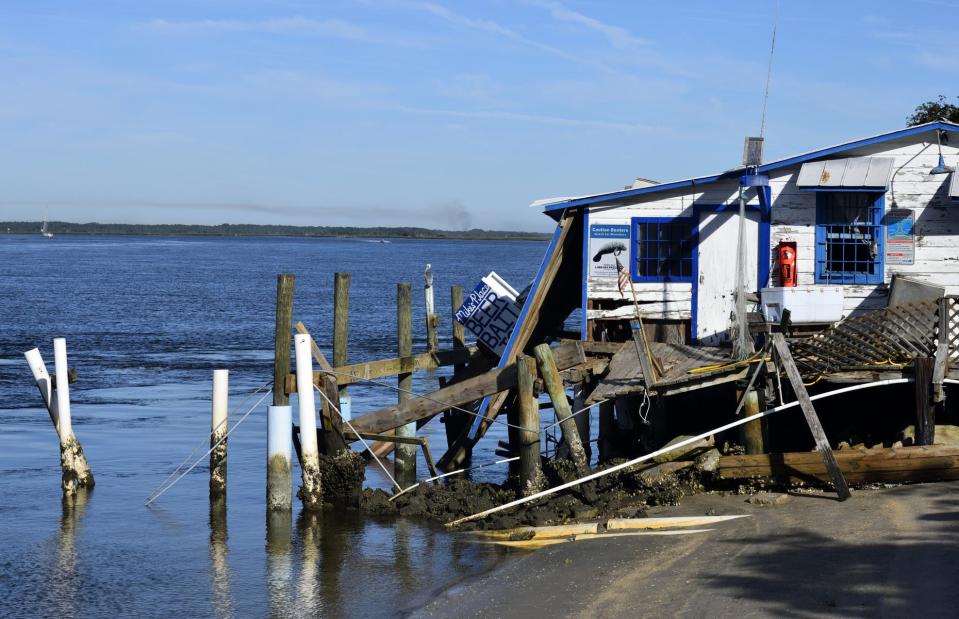
Paul Brennan / Shutterstock
Every time a hurricane or tropical storm hits, the residents of Vilano Beach worry whether their vacation homes will end up being claimed by the ocean, and many dwellings have already succumbed to these potent forces of nature.
The beach was hit by a powerful nor'easter in 2021, followed by two tropical storms in 2022. The tempests caused massive harm to the beach and dunes. The first two storms alone affected more than 600 homes across the wider county and caused an estimated £30 million ($38m) in damages.
Vilano Beach, Florida, USA
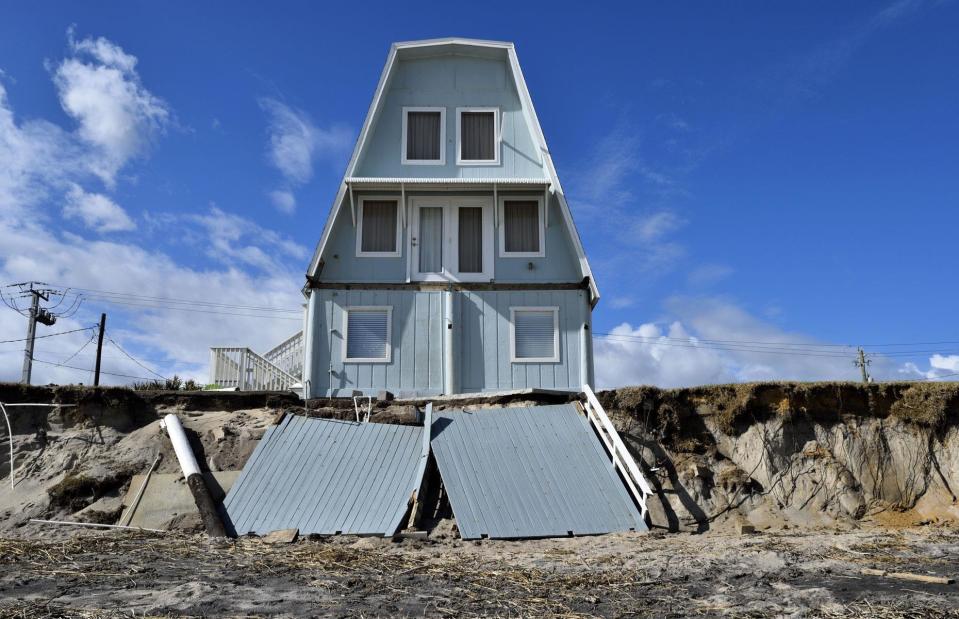
Paul Brennan / Shutterstock
In August 2023, the US Army Corps of Engineers began repairing storm damage on a 2.6-mile-long (4.2km) stretch of Vilano Beach that had previously benefited from a 'nourishment' project. The work involved dredging 1.3 million cubic yards (993,921m³) of sand, which was used to rebuild the beach and dunes.
Local residents had previously clubbed together to construct a sea wall, but as the planet warms, these efforts may only have a temporary effect.
Topsail Island, North Carolina, USA
![<p>Michael Au / Flickr [CC BY 2.0]</p>](https://s.yimg.com/ny/api/res/1.2/Y_vdyGj_RHB8W8uI8gznLA--/YXBwaWQ9aGlnaGxhbmRlcjt3PTk2MDtoPTYxOQ--/https://media.zenfs.com/en/loveexploring_uk_835/5c89d9f32b9bac1efe4554fdf5c01ed9)
Michael Au / Flickr [CC BY 2.0]
Like Vilano Beach, Topsail Island in North Carolina is also vulnerable to nor'easters, as well as hurricanes and tropical storms. In November 2019, a nasty nor'easter washed away sand dunes and damaged beach homes.
Hurricane Florence, which slammed into the Carolinas in September 2018, was even more destructive. The unforgiving storm washed away swathes of dunes and damaged or completely destroyed hundreds of buildings.
Topsail Island, North Carolina, USA
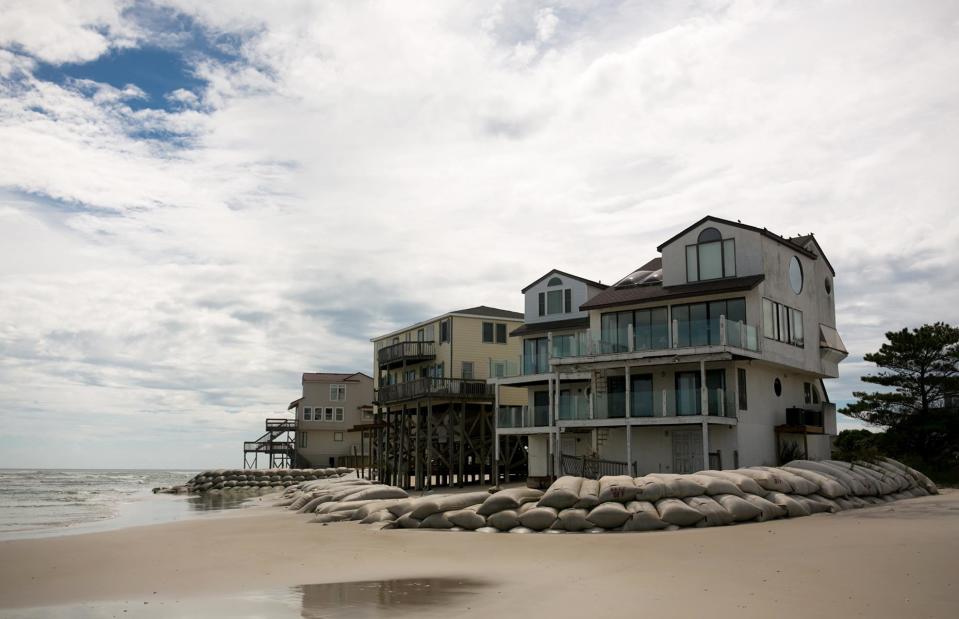
Logan Cyrus / Getty
Millions of dollars have been spent rebuilding the dunes, repairing damaged homes and infrastructure, and demolishing condemned structures, but some local officials and property owners may feel that they are fighting a losing battle, given the frequency of these severe erosion events.
In March 2023, work began on multiple nourishment projects on North Topsail Beach, costing more than £14.2 million ($18m).
Topsail Island, North Carolina, USA
![<p>gardener41 / Flickr [CC BY-SA 2.0]</p>](https://s.yimg.com/ny/api/res/1.2/rPrTrDtvW1MzTMe5v3BGEA--/YXBwaWQ9aGlnaGxhbmRlcjt3PTk2MDtoPTYxOQ--/https://media.zenfs.com/en/loveexploring_uk_835/8803f899736ec2231b07461835fe7c5f)
gardener41 / Flickr [CC BY-SA 2.0]
The beach received around 24 billion stone (1.7mt) of sand to rebuild the beach in 2023 and a structure of large stones will be built soon to slow erosion. An additional 465,000 cubic yards (355,500m³) of sand will be added to a 2.5-mile (4km) stretch of beach and should be completed by May 2024.
Work rebuilding areas of North Topsail has slowed down somewhat as construction on the beach must halt every year between May and November for turtle nesting season.
Jakarta, Java, Indonesia
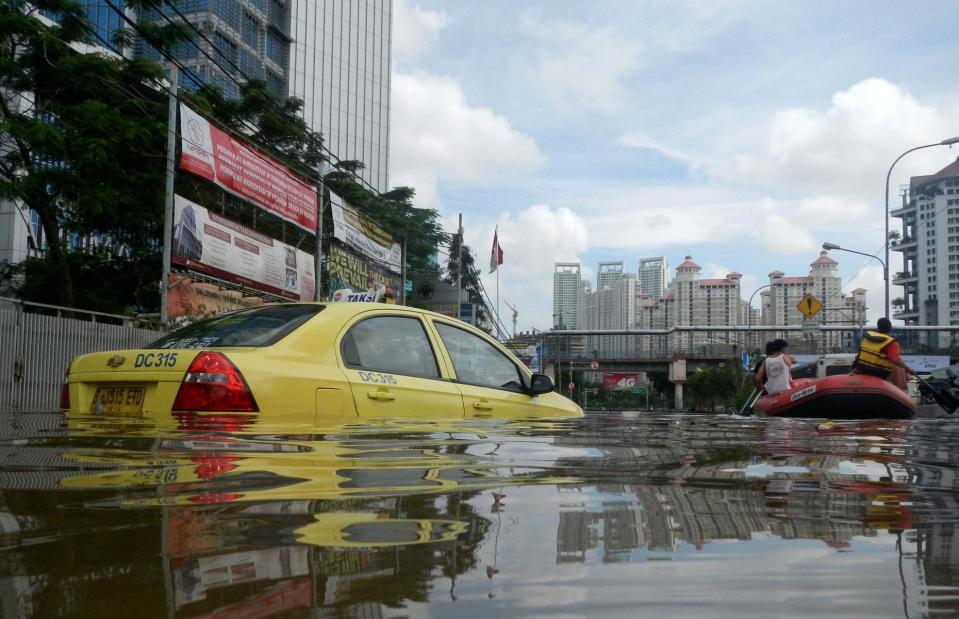
dani daniar / Shutterstock
The fastest-sinking city in the world, Jakarta is at risk of being the first megatropolis to be decimated by climate change. Constructed on a low-lying swampy delta intersected by 13 rivers, Jakarta experiences nightmarish flooding almost every year.
Almost half of the city sits below sea level and as the global level rises, the future prospects for the city are grim, to say the least. Experts have warned that large parts of the Indonesian capital, which is home to 10 million people, could be underwater by 2050.
Jakarta, Java, Indonesia

Herdik Herlambang / Shutterstock
In 2007, a storm blew into Jakarta causing 13-foot-high (4m) floodwaters. The flood killed 80 people, displaced an estimated 340,000 and caused hundreds of millions of pounds of damage. Fast forward to December 2019 when Jakarta was hit by its worst flood in a decade after 14.8 inches (38cm) of rain fell on the city in one day.
The issues Jakarta faces are amplified by the aggressive extraction of groundwater for day-to-day use, which has led to increased subsidence. Alarmingly, the northern area of Jakarta is sinking by as much as 11 inches (28mm) per year.
Authorities have attempted to head off the crisis with a number of solutions. One project already underway is the extension of an existing coastal wall. Scheduled to be completed in 2030, it will stretch 29 miles (47km) along the north coast. However, with the city sinking and the sea rising, the wall is only a temporary measure.
Jakarta, Java, Indonesia

Iqro Rinaldi / Shutterstock
Another plan is for a 20-mile-long (32km), 10,000-acre (4,046ha) artificial island to be built offshore in Jakarta Bay. The giant sea wall will take the shape of a Garuda bird and is designed to block storm surges. The giant sea wall will also house apartment blocks and offices.
Most drastically, the government is planning to move the capital of Indonesia from Jakarta 800 miles away to Borneo. Named Nusantara, the city will stand on the site of a paper industry forest and is set to be completed in 2045. The move is projected to cost 466 trillion rupiah (£22.4bn/$28.4bn).
Critics of the plan feel the government will be abandoning Jakarta residents to the floodwaters, while environmentalists claim the restoration of Indonesia's riverbanks and ancient mangrove forests would be of greater benefit to the city.
Venice, Veneto, Italy
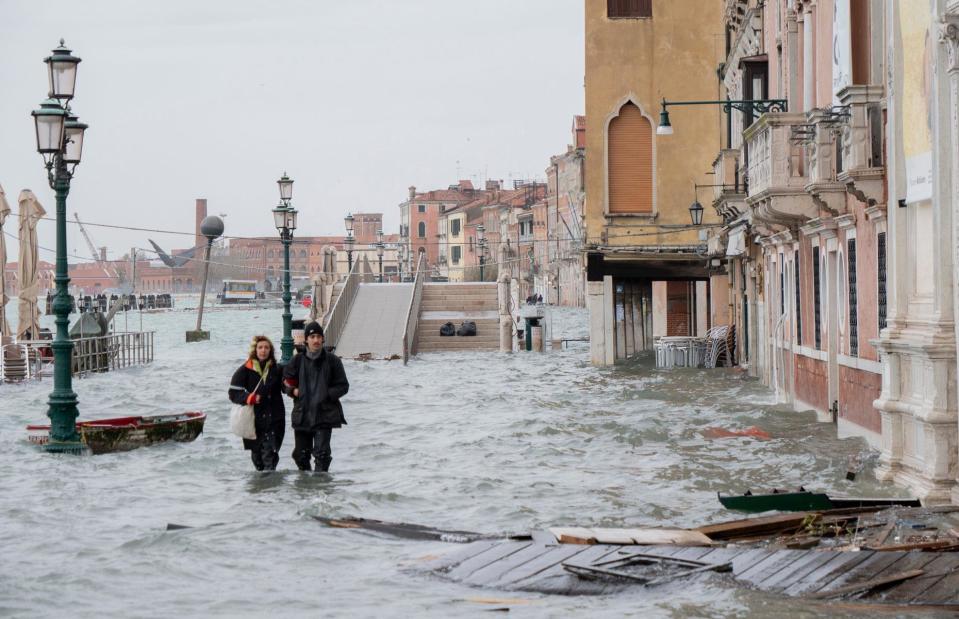
Ihor Serdyukov / Shutterstock
Venice is pretty much in the same (sinking) boat as Jakarta, if you'll excuse the pun. Rising sea levels present an existential threat to the historic city. Climate scientists predict that the tourist hotspot will be entirely underwater by the end of the 21st century.
Made up of 120 islands connected by 391 bridges that crisscross over 177 canals, Venice is sinking. Its beautiful buildings are built on a lagoon made of mud and loose clay, balanced upon inadequate foundations of vertical timber poles sunk into the mud. As a result, the city has dropped by 5.9 inches (15cm) over the past 100 years.
Venice, Veneto, Italy
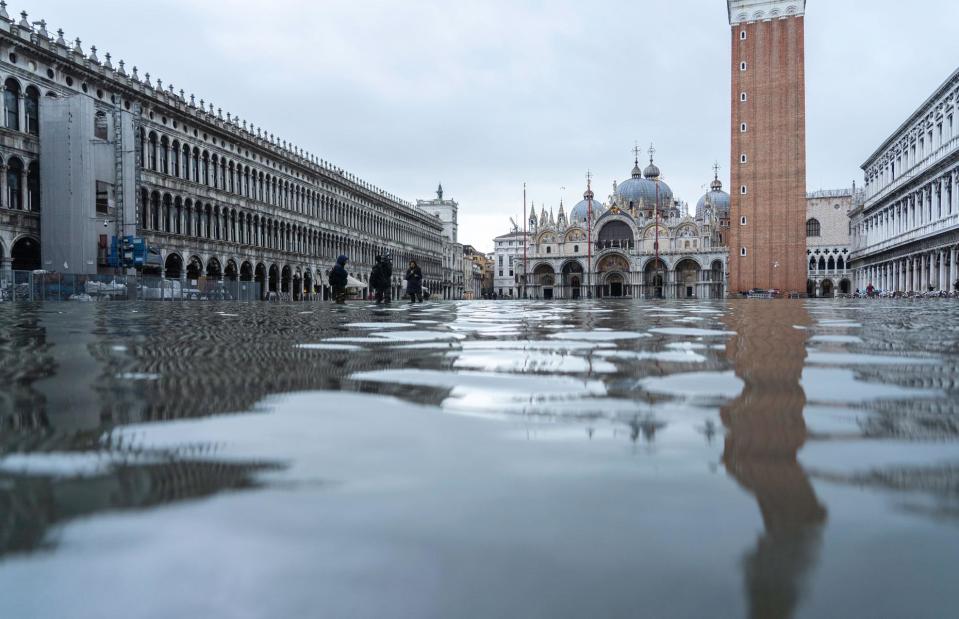
Mclein / Shutterstock
In November 2019, Venice suffered a high tide or 'acqua alta' of six feet (1.8m), the second-highest on record and the worst since 1966. The waters flooded over 80% of the city, leaving its most famous landmarks such as Piazza San Marco (pictured) underwater.
The square's famous basilica – which stands just 26 inches (65cm) above sea level – was flooded by salty seawater, which damaged marble slabs, mosaics and ancient columns. Repair work cost the government €3.3 million (£2.8m/$3.5m).
Venice, Veneto, Italy
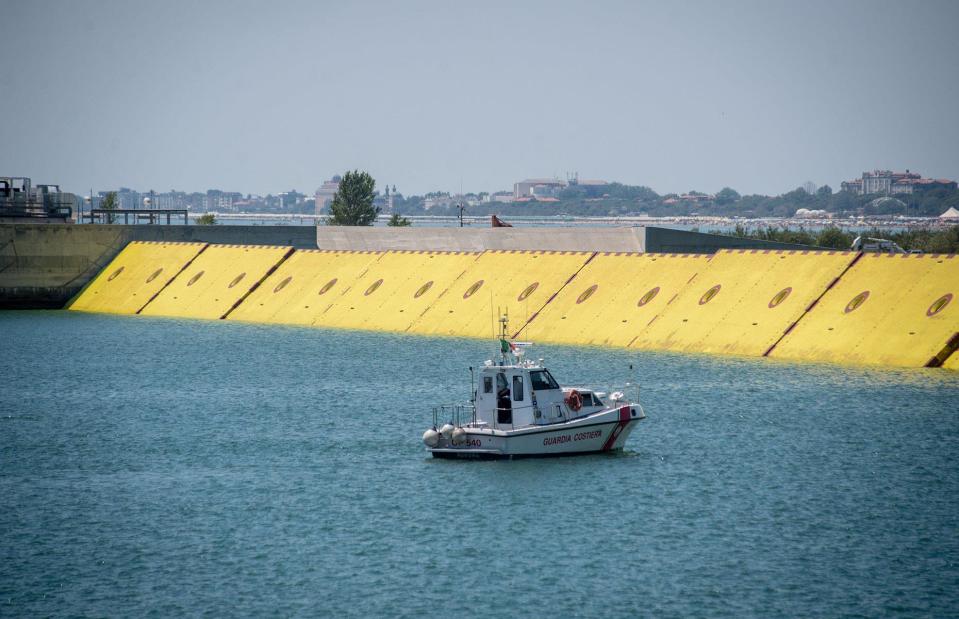
LaPresse / Alamy Stock Photo
Like their counterparts in Jakarta, the Venetian authorities hope that an ambitious flood defence project will save the city.
Building started on the MOSE megaproject in 2003. It was predicted to be finished in 2011, but the project was beset by jaw-dropping cost overruns and delays. Thankfully, the enormous system of sea barriers was finally completed in 2020 and was put to work straight away. It was predicted that MOSE would be raised around five times a year, every time the incoming tide hit 3.6 feet (1m). In the first two years alone, MOSE was deployed 49 times.
However, climate change experts predict Venice's sea level could rise by almost 2.5 feet (0.8m) by 2100. If that happens, MOSE would have to be up more often than it would be down.
New Orleans, Louisiana, USA
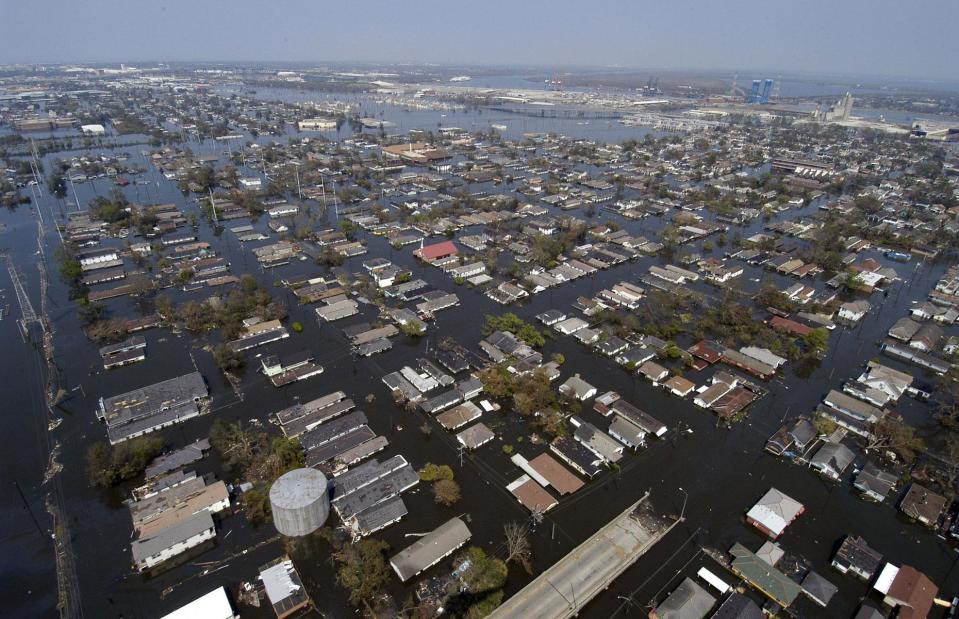
Chris Nicotera / Shutterstock
New Orleans is confronting a similar predicament. Much of the Louisiana city lies six feet (1.8m) below sea level and rests on marshy, loose soil that is prone to subsidence.
The city's overburdened municipal drainage system has further destabilised the land and rising sea levels coupled with the threat of worsening hurricanes and storm surges are only adding to its woes.
New Orleans, Louisiana, USA
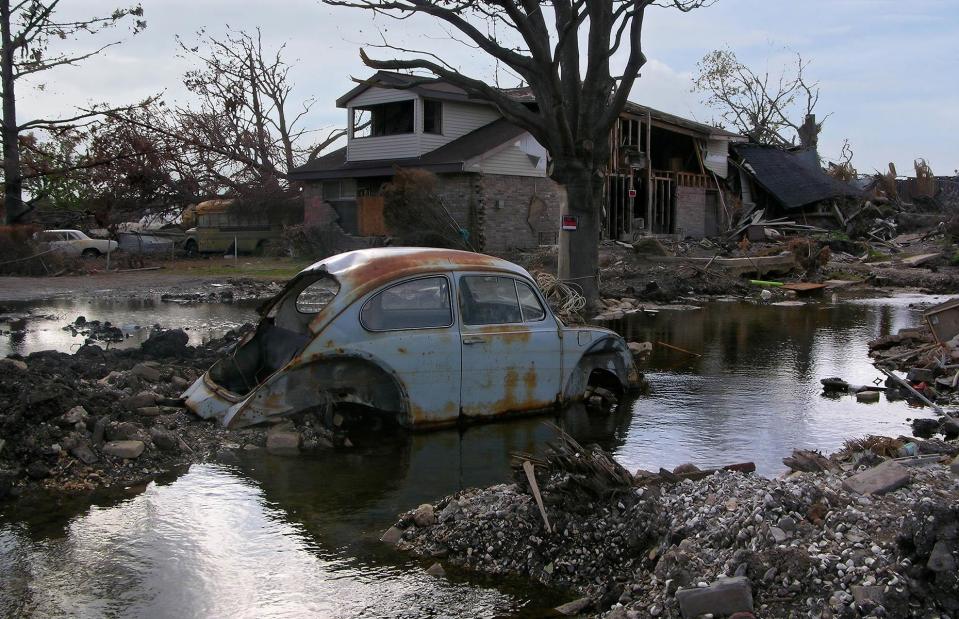
Pattie Steib / Shutterstock
When Hurricane Katrina hit New Orleans in August 2005, the numerous levees that were supposed to protect the city failed, leaving 80% of the city underwater. Katrina damaged 70% of New Orleans' inhabited homes and killing 971 people in Louisiana alone.
The devastation elicited a major response from the authorities. Since then, over 350 miles (563km) of floodwalls, levees and other coastal defences have been constructed at a cost of £15.4 billion ($19.5bn).
Nevertheless, many experts believe a lot more needs to be done to protect New Orleans and prevent the city from being inundated in the future.
New Orleans, Louisiana, USA

Chris Nicotera / Shutterstock
Sadly, in July 2019, the Big Easy was hit by Tropical Storm Barry, which again submerged swathes of the city.
In December 2023, workers broke ground on a £24.5 million ($31m) water management project designed to reduce flood damage by diverting stormwater into a 25-acre (10.1ha) park with 'water detention areas'.
Despite this, the future doesn't look bright for New Orleans. As recently as April 2024, the city's streets were submerged following severe flash floods.
According to a NASA study, parts of the city are sinking at a rate of two inches (5cm) per year, putting it on track to be underwater in 2100.
Wamberal, New South Wales, Australia
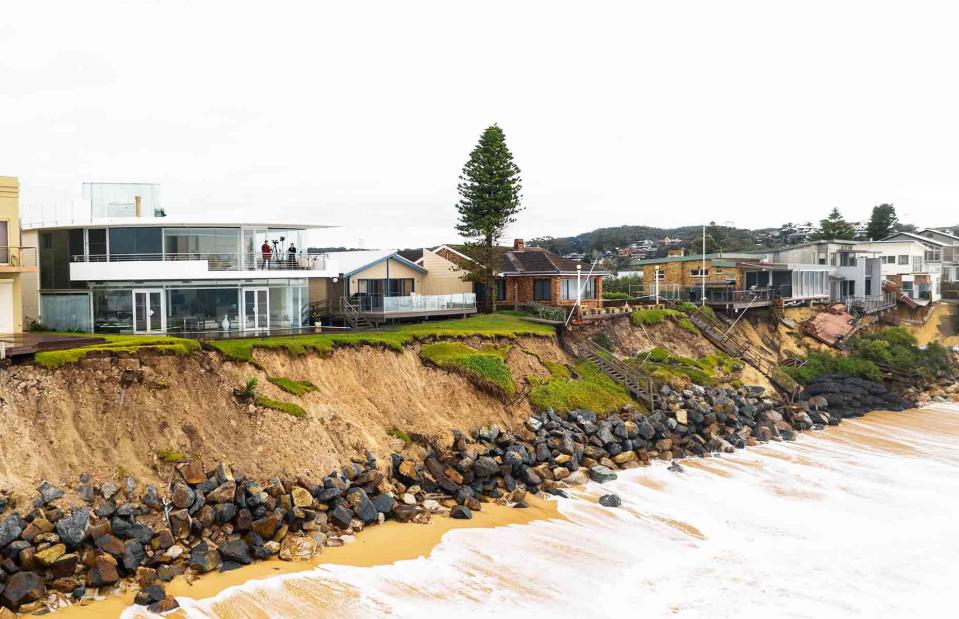
Brook Mitchell / Getty
In recent decades, the dazzling coastline of New South Wales in the southeast of Australia has been plagued by coastal erosion, and the suburb of Wamberal, north of Sydney, has been especially hard-hit.
A popular spot for luxury beach homes, the shore was battered by extreme storms in 2016, eating up around 23 feet (7m) of beach, leaving many properties balancing precariously on the cliff edge.
Wamberal, New South Wales, Australia
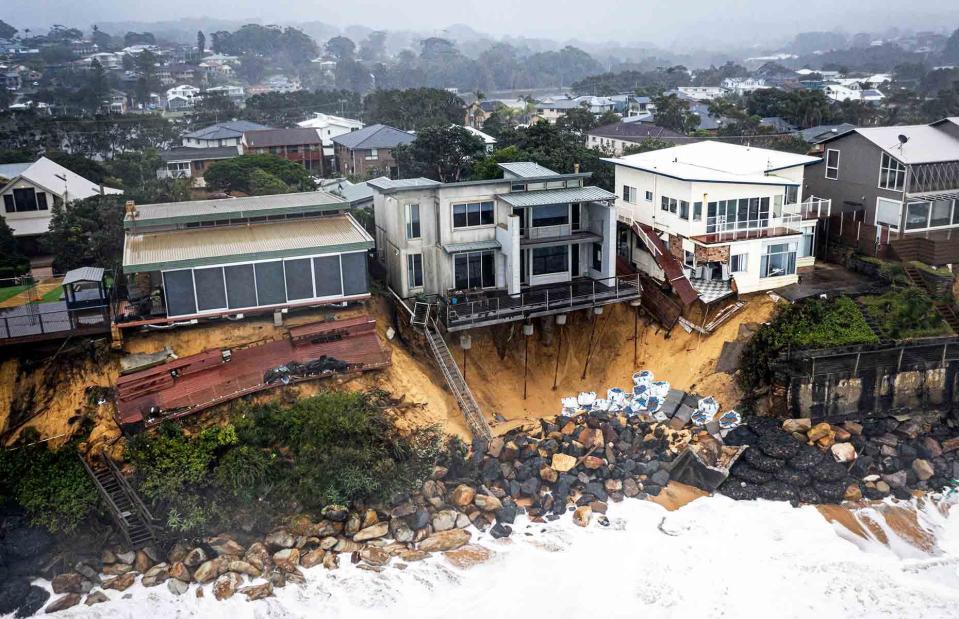
Brook Mitchell / Getty
Fast-forward to July 2020 and the coastline was once again ravaged by a large swell. Homes worth millions of dollars were ordered to evacuate when freak waves rocked the shoreline, stripping away the sandy soil and leaving many of the property's foundations exposed. Several homes partially collapsed – the ground beneath this house was all but swept away, while to the right, a residence teeters on the brink of collapse, with huge swathes of the interior exposed to the elements.
In the aftermath of the storms in 2016, a dark secret came to light. Asbestos was found scattered along the beach after erosion revealed building waste buried in the sand dunes. More of the hazardous material was discovered following the devastation in 2020, The Sydney Morning Herald reported.
Wamberal, New South Wales, Australia
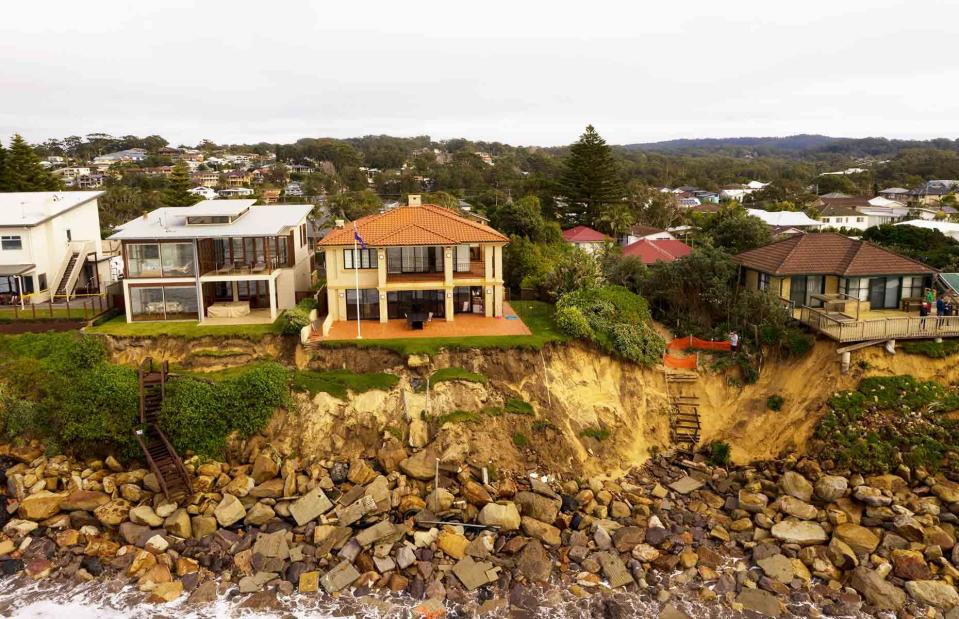
James D. Morgan / Getty
Since then, homes on the beach have been reinforced with sand, but that's a temporary measure for homeowners in a precarious position. The favoured long-term solution is a seawall, which is estimated to cost anywhere between AU$25 million (£13m/$16.6m) and AU$40 million (£21m/$26.5m).
Geotechnical work for the proposed seawall began in the summer of 2023, though it was met by protests from locals who argue that it will retract from the beach and impact the suburb's tourism industry.


